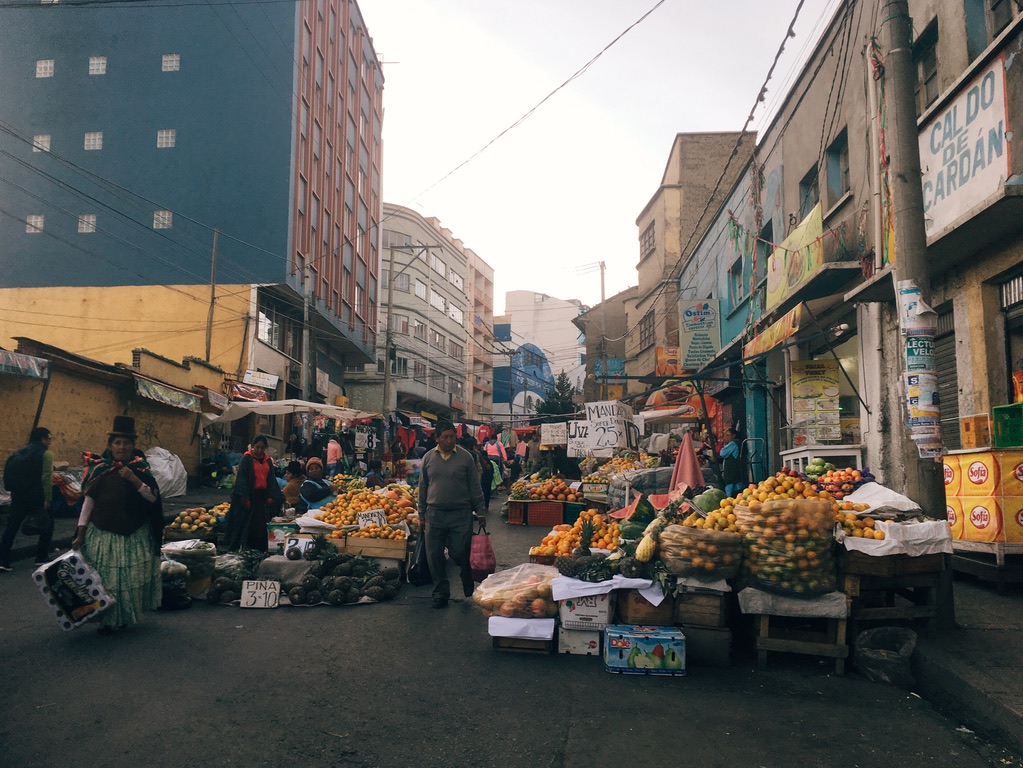SOLO BACKPACKING TRAVEL HANDBOOK
All you need for your next long-term solo backpacking adventure
As a solo female traveller, I’ve backpacked to over 40 countries, from India to Costa Rica. And I’ve learned a bunch. So here’s my handbook to help you take the plunge and travel solo with peace of mind.
You’ll find free downloadable resources and travel tips for the seasoned solo backpacker. Learn how to stay healthy while travelling solo, build meaningful connections on the road, stay organised, and travel long-term on a budget. For destination guides to get inspired, head here.
Soothe your thirst for adventure. Let’s dig in ︎︎︎

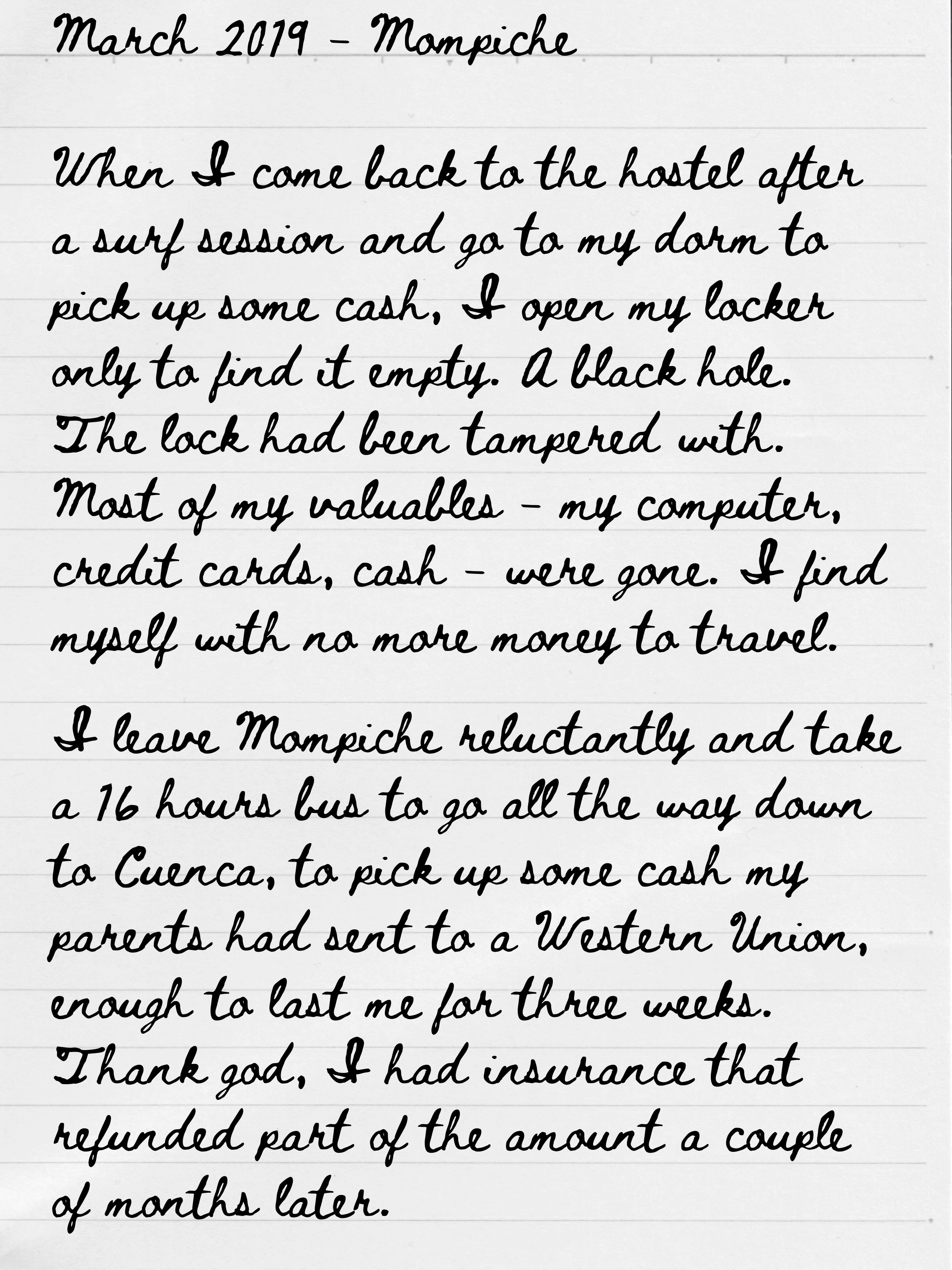
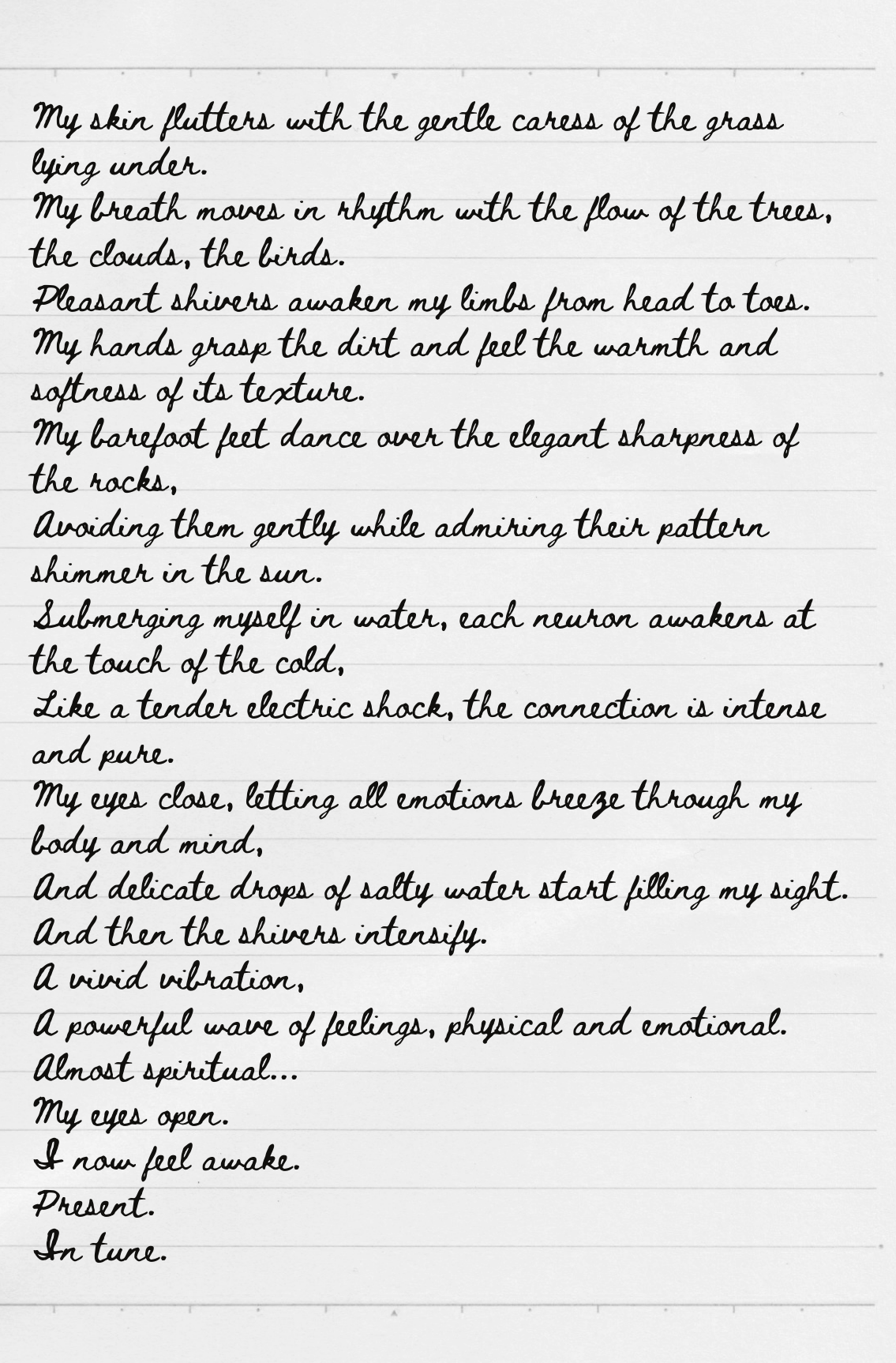
HOW TO PLAN A SOLO BACKPACKING OR LONG-TERM TRIP

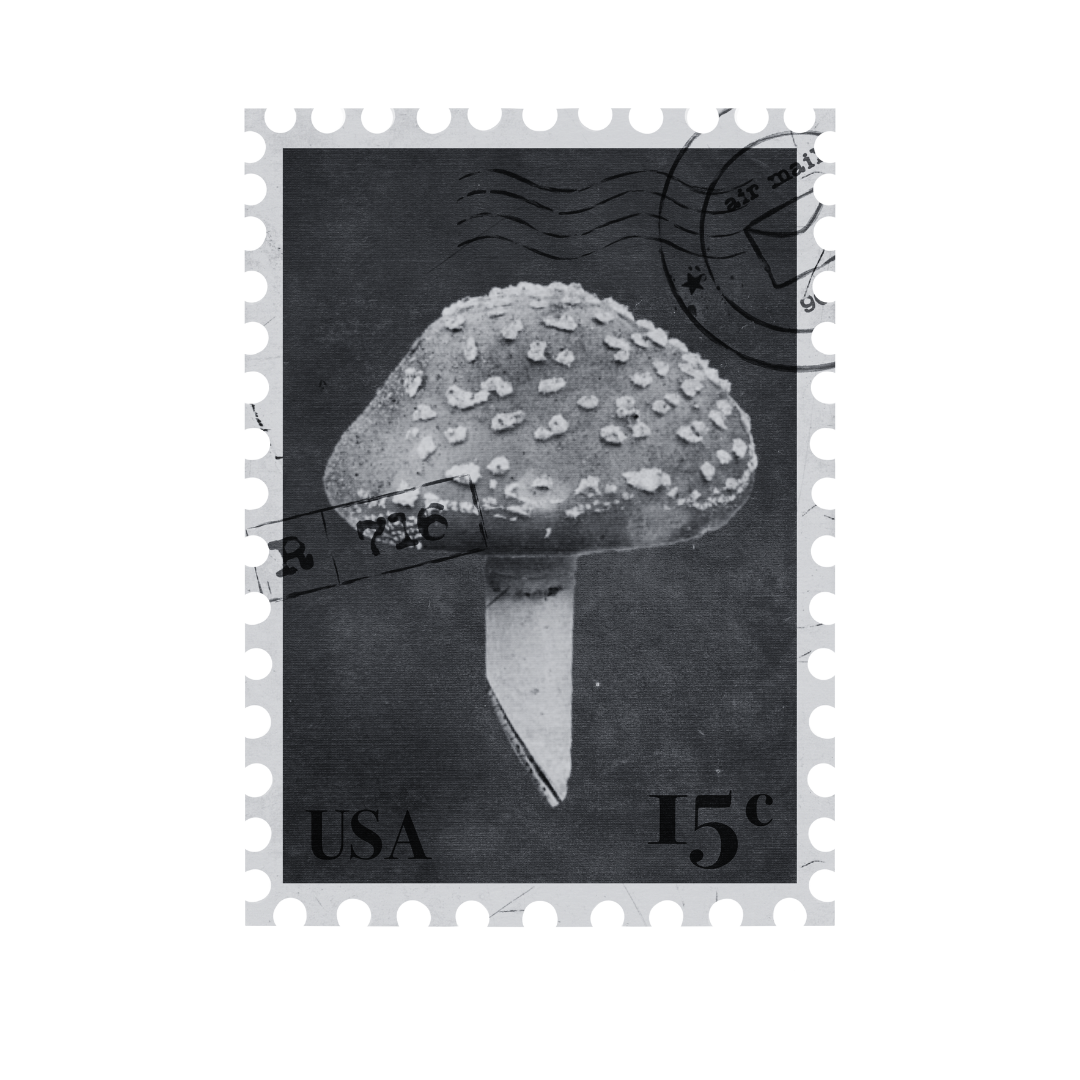
WHAT TO PACK FOR A 6-MONTH SOUTH AMERICA BACKPACKING TRIP
 10 TIPS FOR PLANNING A 6-MONTH BACKPACKING TRIP IN SOUTH AMERICA
10 TIPS FOR PLANNING A 6-MONTH BACKPACKING TRIP IN SOUTH AMERICAMENTAL HEALTH ON THE ROAD WHILE TRAVELLING LONG-TERM
GIFTS FOR SOLO BACKPACKERS
28/05/23
Dreaming of solo backpacking around the world but feeling overwhelmed by the planning process? Believe me, I know how scary it can be. It took me a solid 6 months to plan my own journey. So to save you some hassle, here's a comprehensive step-by-step guide to help you prepare an unforgettable long-term backpacking trip.
If you’d rather read this guide in a snazzy-looking eBook format and access it on the go, you can download the free eBook version . You’ll get instant access to other free tools, such as the backpacking trip planner and my Notion list of 60+ trip planning resources.
20 STEPS TO PLAN A LONG-TERM SOLO BACKPACKING TRIP
Dreaming of solo backpacking around the world but feeling overwhelmed by the planning process? Believe me, I know how scary it can be. It took me a solid 6 months to plan my own journey. So to save you some hassle, here's a comprehensive step-by-step guide to help you prepare an unforgettable long-term backpacking trip.
If you’d rather read this guide in a snazzy-looking eBook format and access it on the go, you can download the free eBook version . You’ll get instant access to other free tools, such as the backpacking trip planner and my Notion list of 60+ trip planning resources.

When should I start planning for my long-term backpacking trip?
Long-term travel planning takes time and effort. With so many things to consider, it's important to start preparing as early as possible, especially if you plan on being away for an extended period of time.
It's a good idea to begin planning as soon as you start thinking about making a backpacking trip. Start by researching potential destinations to get the process started. How long you'll need to prepare for your trip also depends on the following:
- Your finances: If you need to save a significant amount of money for your backpacking trip and have no savings, you'll need time to accumulate enough funds before leaving.
- Your flat and job situation: Do you need to find a tenant, move your belongings, or cancel your lease? Do you need to quit your job? These tasks can take time, so evaluate your situation and plan accordingly.
- Visas, passport, and vaccines: Some vaccines have a 30-day delay between shots. Visas can take a while to process, and passports can take over a month to renew or issue.
- Your destination: If you're travelling to the other side of the continent, book your flight tickets at least four months in advance. This means you'll need to plan your trip well before that
It all depends on your unique situation. A strict minimum of three months is necessary to plan a backpacking trip to allow for visa applications, vaccinations, and cheaper flight bookings.
💡To give you a ballpark figure, here's how long it took me to plan for my 6-month backpacking trip in South America:
︎In March 2018, I realised I needed to do a backpacking trip. The decision was apparent as I was suffering from burnout. It felt like the right thing to do. My whole life suddenly became about this future trip. I poured all my energy into it, as it helped me picture a better future.
︎I had an intensive work schedule from March to August, so I couldn't plan anything during that time. I was leisurely browsing destinations and decided to backpack in South America. I told my boss I wanted to end my contract at the end of the year. This helped me enter the planning phase, as the decision to leave was now concrete, and I couldn't get out of it.
︎I started planning my trip in September, about six months before leaving. I still had a job at the time, so that's why I needed ample time to prepare for this backpacking trip.
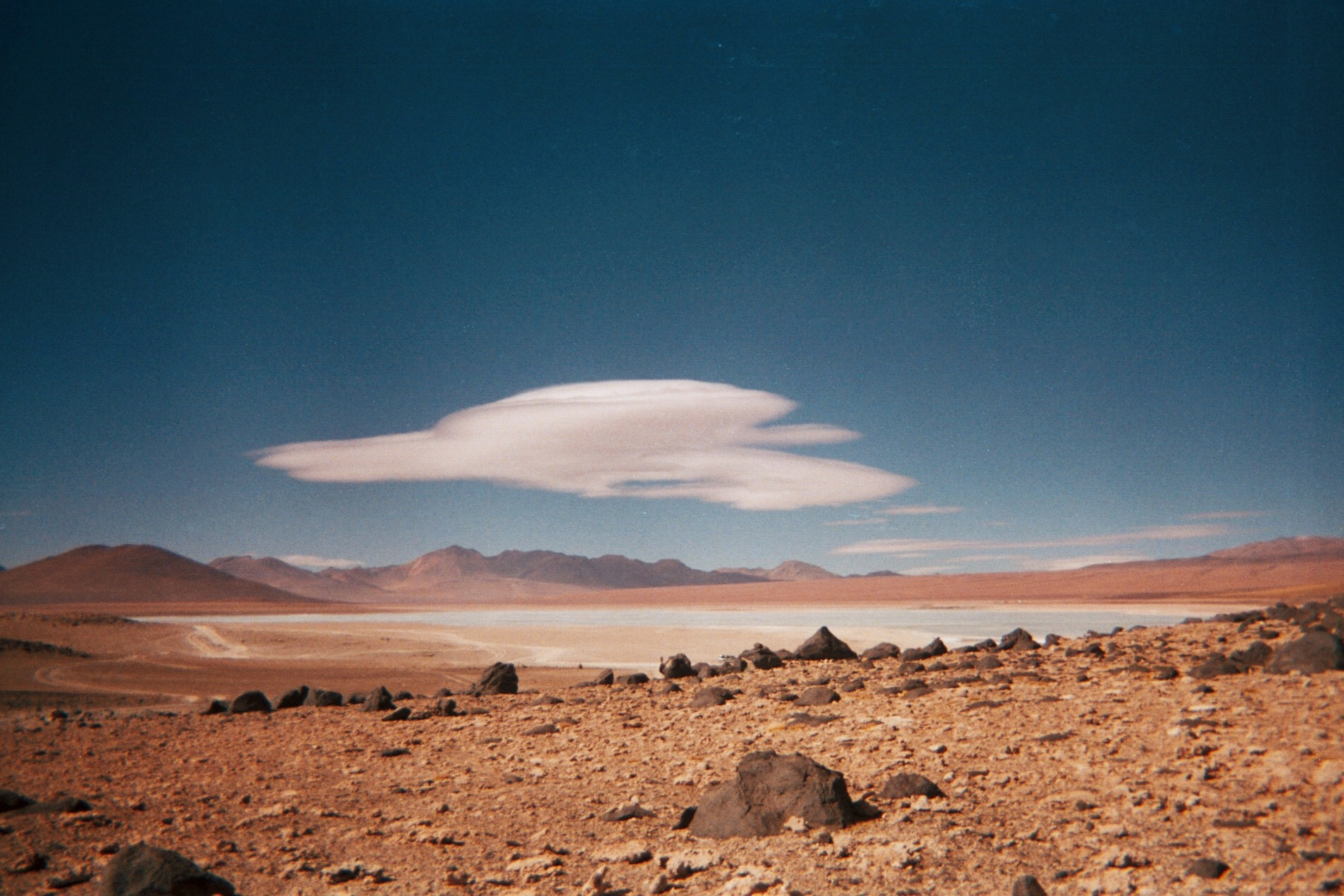
Step 1) Decide WHY you want to make a backpacking trip
People usually don't travel for multiple months to discover new places for no reason. Why do you actually want to spend time away from home, and travel adventurously?
For me, it was to heal from burnout, improve my surfing, build self-confidence, and take a break from my exhausting life. It also felt like the right thing to do, like it was my destiny, and something I absolutely had to do.
When you know why you want to travel solo for an extended period, your choices become meaningful, and your journey becomes a life-changing decision.
Step 2) Think about how long you'd like to travel
You don't need to know exactly how many months (or years) you want to travel. But think about the minimum time you'd like to spend away from home. Do you want to do a 3-month, 6-month or 1-year backpacking trip?
Remember that you could extend or shorten your trip while travelling. But you'll need to rely on your savings if you're not planning to have a monthly income while travelling. Giving yourself a minimum time will help you properly budget and save for your trip.
If you'll have a monthly income, this becomes easier, as you can freely extend your time since you won't run out of money.
Step 3) Research destinations to get inspired
If you're unsure which countries or regions to explore for backpacking, head to backpacking forums on Facebook and speak to people who have made a similar trip. You can also read backpacking blogs and travel magazines to get an idea of which destinations may interest you.
A good way to start is by picking a continent first. You can decide which countries to visit later, but it's best to favour continents where you can easily travel from one place to another, preferably by bus or boat.
When researching destinations, also pay attention to administrative requirements such as visas and mandatory vaccines.
Need some ideas? Check out my 6-month South America backpacking trip itinerary ︎︎︎
The brainstorming phase ☁️
You've heard about your friends' epic journeys, from road-tripping in Australia to trekking the Andes in Peru. You're yearning to live the same exhilarating experiences, discover the world and take a break from the daily hustle of work. You want to feel free!
In other words, you're entering the brainstorming phase: should I go on a backpacking trip? Where, when, how? So many questions may arise, and you may feel overwhelmed by the planning process and the admin' hassle of preparing for a long-term adventure.
Dashing out a clear travel plan can help ease potential travel-related anxiety and get excited about leaving.
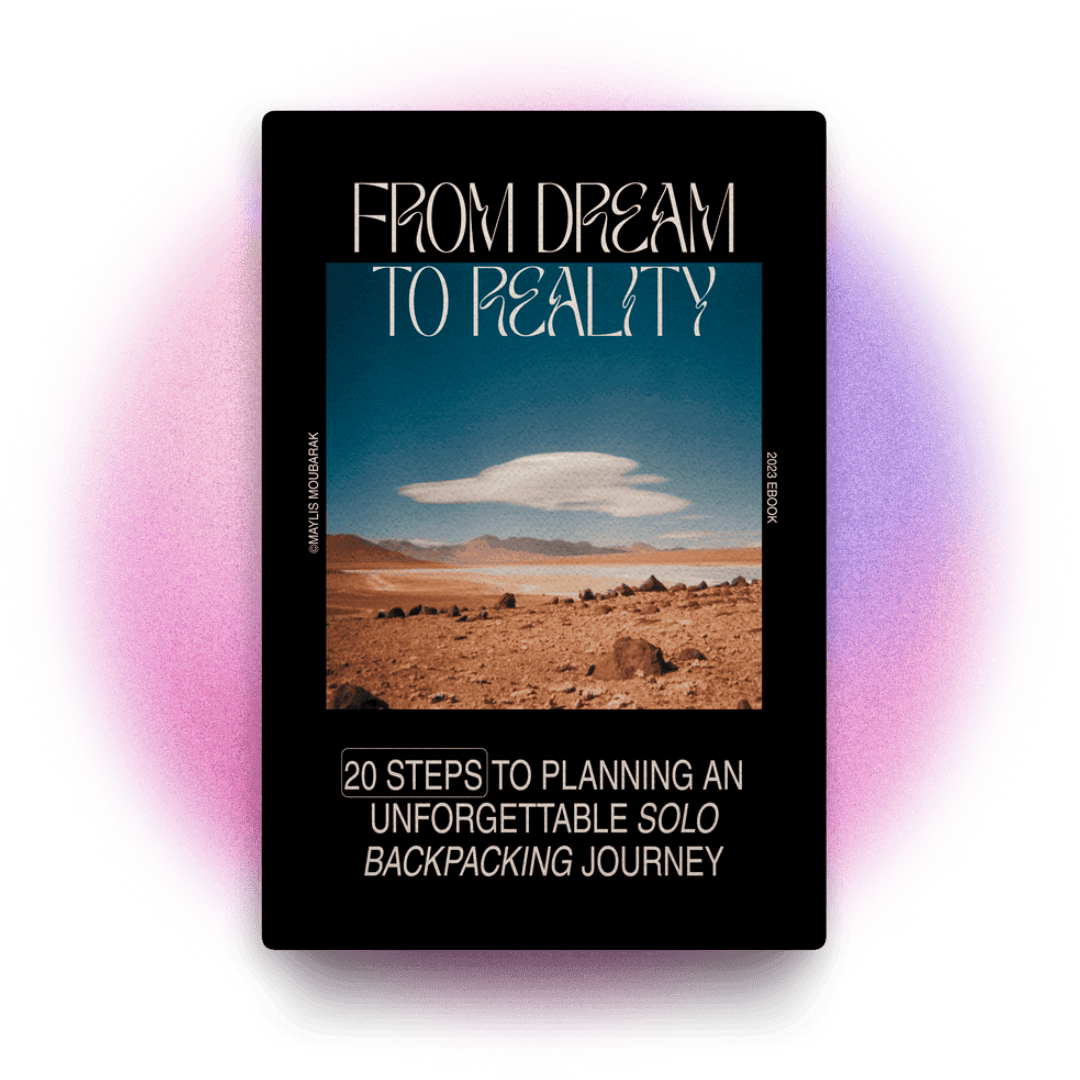
Step 4) Make a trip “retro planning”: your pre-departure checklist
A pre-departure checklist can give a snapshot of everything you need to do before leaving and when you need to do it. It can help you avoid overlooking important details and determine your ideal departure date. You can use my trip retro planning template, which is the table I used to plan my trip. Edit and adapt it to fit your specific situation.
How it works:
- Add the months from when you start planning your trip to your estimated departure date on the top line. There should be four columns per month (one column=one week). If you need six months to prepare for your trip and want to leave in January, the first month would be August.
- List all your tasks in the left column. Follow the steps below to learn about specific travel planning tasks.
- Determine when you need to complete each task. Add a "To Do" box in the corresponding week.
- When you're done with a task, change the box to "Done."
You can edit your task list and add more tasks as you prepare for your trip and research destinations.
Open the retro-planning template ︎︎︎
Step 5) Determine what to do regarding your flat and job situation
First things first: what will you do with your flat while travelling long-term? Do you need to move out, find a tenant, or sublease it?
What about your job? Will you keep working while backpacking, go freelance, or rely on your savings?
Think about these issues early on, and then define the steps needed to regulate your situation regarding your job, taxes, and flat. Input these tasks into your trip planner.
Step 6) Start budgeting for your trip
Estimating your trip budget can help you determine if you can afford to travel solo long-term. It allows you to re-evaluate your itinerary, adjust the length of your trip, and know how much you need to save before taking off.
To start, figure out the cost of flights. Then, determine expenses such as vaccine and visa fees, fixed monthly expenses, accommodation, food, transportation, and backpacking gear.
If you need a travel budget template, use the budget worksheet provided in my backpacking trip planner to estimate your total budget. For more tips on budgeting for your long-term adventure, read "How to Plan a Budget-Friendly Backpacking Trip."
Finally, update your trip budget with the actual costs as you complete each task from your travel planner.
Step 7) Book your one-way flight
Use websites like Skyscanner to compare flight prices. Try booking your flight on a Tuesday, as this is when rates are updated. Always search for flights in incognito mode and clear your cookies to benefit from lower prices.
For long-haul flights where you need to cross the globe, book your tickets at least four months in advance.
You only need to book a return flight if you already know when you want (or need) to return home. Booking a one-way flight can give you a profound sense of freedom because you can extend or shorten your trip and travel without a specific return date.
After booking your flight, update your budget worksheet with the actual cost.
Step 8) Get the necessary visas & vaccine shots
On your travel planning to-do list, make sure to mark your calendar with the dates for when you need to take your required vaccine shots. You can find the necessary vaccines for South America in my backpacking trip planner.
Step 9) Pick a travel insurance
When selecting travel insurance for solo travellers, it's important to consider several factors to ensure comprehensive coverage. Here are some tips to help you choose the right travel insurance:
- Coverage for medical expenses: Look for a policy that provides ample coverage for emergency medical expenses, including hospitalisation, medical treatments, and evacuation if necessary. Ensure the coverage extends to the destinations you plan to visit.
- Trip cancellation and interruption: Opt for a policy that reimburses you for non-refundable trip costs in case you need to cancel or cut short your trip due to unexpected circumstances such as illness, injury, or emergencies.
- Personal belongings and baggage: Choose a policy that offers coverage for lost, stolen, or damaged belongings, including luggage, electronics, and important documents like passports. Check the policy limits and consider any valuable items you may be carrying.
- Emergency assistance and 24/7 support: Look for a policy that provides round-the-clock emergency assistance services. This can include medical advice, emergency cash transfers, and coordination for medical evacuations if needed.
- Personal liability coverage: Consider a policy that includes personal liability coverage to protect you in case you cause accidental injury or damage to someone else's property during your trip.
- Duration and coverage limits: Ensure the policy covers the entire duration of your trip and has adequate coverage limits that align with your needs and the costs associated with your destination.
- Reviews and reputation: Research the insurance provider and read reviews from other travellers to gauge their reputation for customer service, claims processing, and overall satisfaction.
- Compare multiple quotes: Get quotes from different insurance providers and compare the coverage, exclusions, deductibles and prices to find the best balance for your specific travel requirements.
My recommendation: if you’re from the US, SafetyWing’s Nomad Insurance provides flexible plans to fit your needs. If you’re based in Europe, Chapka is a leader in the industry and offers affordable plans whatever your needs.
Step 10) Start learning the local language
Give yourself time to learn the language. It'll make your trip ten times better.
Step 11) Make your packing list
First, determine what you need to bring and what you need to buy. Then, factor these costs into your travel budget spreadsheet.
You can find a backpacking essentials checklist in the backpacking trip planner. If you're traveling to South America, read "What to Pack for South America Backpacking" and get a full 6-month backpacking trip packing list.
Step 12) Buy the missing gear
This is when stuff starts getting really exciting. Pick your perfect backpack, and buy quality gear.
Step 13) Get a Revolut credit card (or a similar option)
If your current bank charges you for oversee withdrawals and transactions, consider getting an international online bank to avoid hefty currency exchange fees. Let your bank know for how long you'll be travelling and where.
Step 14) Change your mobile plan and unlock your phone
Similarly, see what international options your mobile plan offers. Unlock your phone to use a local sim card and get 4G while travelling abroad.
Step 15) Book necessary doctor appointments
Make your routine medical appointments before leaving (dentist, gynaecologist...).
Step 16) Cancel unnecessary monthly subscriptions
Are you subscribed to anything that you won't need during your trip? Cancel them before leaving to save a few pennies!
Step 17) Plan your arrival
You're getting SO close! Determine the first few destinations you'd like to visit. I only planned my first month in Costa Rica before leaving. I pre-booked hostels, secured a volunteering opportunity, and then embraced the spontaneity. As I went along, I adapted my itinerary each month based on the amazing people I met and the opportunities that came my way.
I highly recommend not over-planning every single step in advance. Being flexible allows for unexpected discoveries and incredible experiences that may not fit a predetermined schedule.
However, it's always helpful to have a wish list in mind—a general idea of the destinations you want to visit and the activities you'd like to engage in. To make things easier, you'll find a wish list template in the backpacking trip planner.
Step 18) Prepare an online drive with important documents and back up your phone and laptop
Keeping your documents safe while travelling long-term is essential. Prepare an online drive with scanned copies of your important travel documents. Make this drive accessible offline so you can access it on the go.
Backup your phone before leaving, and schedule monthly online backups to make sure you don't lose those precious photo memories.
Step 19) Prepare music playlists
You're about to embark on lengthy flights and bus rides, so prep some playlists with your favourite sounds to make the journey easier. If you need inspiration, I’ve curated 7 music playlist for solo backpackers on long bus rides.
Step 20) Last step! Book a onewayfly ticket for proof of return
The excitement is booming! You’re days away from taking off. Your backpack is ready, and you can’t hold still. But hold up, there’s still one essential administrative thing to do before checking in for your flight and starting your epic adventure: having a proof of return.
If you don't have a return flight, you must show proof of return in some countries. Onewayfly allows you to do that for 25€, providing you with a temporary, legit flight reservation that's valid for 48 hours. So book your ticket about 2 days before your departure date to be safe.
When I checked in for my flight to Costa Rica, the airport staff asked for my return ticket, so I was happy I had this "fake" return flight with me!
So to sum it up, here’s how to plan a long-term backpacking trip in 20 steps:
- Decide why you want to make a backpacking trip
- Think about how long you’d like to travel for
- Start researching potential destinations
- Make a pre-departure checklist or to-do list
- Determine what to do with your job and flat while you’re gone
- Start budgeting for your trip
- Book a one-way flight
- Get the necessary visas and vaccines
- Pick a travel insurance
- Start learning the local language
- Make a packing list
- Buy missing gear
- Get a Revolut credit card/similar option
- Change your mobile plan and unlock your phone for international sim cards
- Book necessary medical appointments before leaving
- Cancel unnecessary monthly subscriptions
- Plan your arrival
- Prepare an online drive with important documents
- Prepare music playlists
- Book a proof of return
FAQ: How to plan a long-term solo backpacking trip ✦
How do I plan a long-term solo backpacking trip?
To plan a solo backpacking trip, start by brainstorming destinations, evaluating your job and flat situation, creating a budget, researching accommodations and transportation options, buying backpacking gear, and planning your arrival itinerary. Research safety, cultural norms, and visa requirements for each country you’re planning to visit. You can use a backpacking trip planner or a pre-departure travel checklist to help you know exactly what to do and when before leaving.
What’s the best time of the year to backpack South America?
It depends on where you start and how long you plan on travelling for. If you start your backpacking trip in the North, for example in Colombia, and travel down to Brazil, you’ll experience different seasons. Large countries like Peru and Argentina also experience different seasons in the same month!
I started my trip in January in Costa Rica, and ended it in July in Brazil. This timeline was perfect for me as I was travelling mostly during the shoulder season and didn’t experience heavy rainfall.
Due to the continent's vast size and diverse climates, it's important to consider different weather patterns. Here's a general breakdown:
- Patagonia (Southern Argentina and Chile): The peak season is during the southern hemisphere's summer months from December to February when the weather is milder. But keep in mind that this is also the busiest and most expensive time. Spring (September to November) and autumn (March to May) offer fewer crowds and beautiful landscapes.
- Andean Countries (Peru, Bolivia, Ecuador): I visited these countries in March and April. But most people visit during the dry season in the highlands, which runs from May to September. These months offer more stable weather and clearer skies. Most hiking routes will be open during this time of the year.
- Brazil: The peak tourist season in Brazil is during the country's summer months from December to February. This is a great time to visit coastal regions and enjoy vibrant festivals such as Carnival. I visited Brazil’s coastal region in July and the weather was perfect: comfortable heat, clear skies and little crowds.
- Colombia, Venezuela, and Ecuador: These countries near the equator have relatively stable climates year-round. While they may experience some rainfall, backpacking is possible throughout the year.
Long-term travel budget tips: How can I save money while backpacking?
To save money while backpacking solo, consider volunteering and staying in budget accommodations like hostels or guesthouses, opt for affordable transportation options, and cook your meals instead of dining out. Be mindful of your spending, take advantage of free activities and attractions, and consider travelling during off-peak seasons to secure better deals. For a full guide, read How to plan a budget-friendly backpacking trip︎︎︎
What should I pack for a solo backpacking trip?
Pack lightweight and versatile clothing suitable for the destination's climate, durable footwear, a well-fitted backpack, essential toiletries, a first aid kit, a travel adapter, and necessary travel documents. Bring a portable charger, a lock for your backpack, a reusable water bottle, and any specific gear relevant to your planned activities. Check out my backpacking gear checklist to make your life easier!
How can a backpacking trip planner help me?
A backpacking trip planner will help you organise and streamline the planning process. With it, you can create a travel itinerary, estimate and manage a travel budget, and compile important travel information in one place. It simplifies trip preparation and ensures you don't overlook essential details.
What are some recommended solo backpacking destinations for long-term travel?
There are plenty of unique destinations for solo backpacking. Popular options include Southeast Asia (Thailand, Vietnam, Indonesia), Europe (Spain, Italy), South America (Peru, Costa Rica, Colombia), and Oceania (Australia, New Zealand). Choose a destination that aligns with your interests, budget, travel preferences and safety considerations. Need inspiration? Visit my 6-month South America backpackign trip itinerary. You’ll find a handy map with over 40 stops, from Costa Rica to Brazil.
Which travel insurance should solo travellers take?
Here are some popular options known for their comprehensive coverage and positive customer reviews:
- World Nomads: World Nomads is a well-known travel insurance that caters specifically to backpackers and long-term travellers. They offer flexible policies, including coverage for adventure activities, emergency medical expenses, trip cancellation and baggage protection. It’s the insurance I had for my trip, and they reimbursed all my valuables that got stolen in Ecuador (cash, fraudulent transactions, laptop, camera).
- SafetyWing: SafetyWing has affordable and comprehensive travel medical insurance plans designed for digital nomads and long-term travellers. Their policies cover medical expenses, emergency medical evacuation, travel delays, and personal liability.
- True Traveller: True Traveller specialises in long-term travel insurance and offers flexible policies for backpackers. They provide coverage for medical expenses, emergency repatriation, trip cancellation, and a wide range of adventure activities.
- Chapka Assurance (France): Chapka (CAP Aventure) is a reliable French insurance company specialising in comprehensive travel insurance solutions for adventurous backpackers.
- Genki: an affordable travel & health insurance for digital nomads and adventurous travellers. Works like a monthly subscription that you can cancel whenever needed.
How can I ensure a memorable solo backpacking experience?
To make your solo backpacking experience memorable, embrace spontaneity, interact with locals and fellow travellers, step out of your comfort zone, and immerse yourself in the local culture. Be open to new experiences, and keep a journal or take photos to capture special moments.
Solo travel safety: How can I stay safe as a solo backpacker?
Staying safe as a solo backpacker involves researching and understanding your destination's local customs and laws, avoiding risky areas or situations, staying connected with your family and friends back home, and being aware of your surroundings. Trust your gut, follow basic safety precautions, and consider joining group tours or activities to feel safer.
Discover South America in 40 unusual stops, from Costa Rica to Brazil. Surf and relax in chill surf towns, get off-the beaten-track in the Andes and pump those adrenaline levels without breaking the bank!
BACKPACKING SOUTH AMERICA IN 40 STOPS: AN UNUSUAL 6-MONTH TRIP ITINERARY
Are you dreaming of solo backpacking in South America but feeling overwhelmed by the myriad of options? To help you out, here's my full 6-month Central & South America backpacking route from Costa Rica to Brazil, including travel tips and highlights of my trip.
Surfers and hikers will find their joy in this itinerary, as these activities were the main focus of my journey. You'll also find fascinating cities, hidden gems and quirky backpacker hostels.
This budget-friendly 40-stop itinerary is also perfect for solo travellers (even introverts) as it has the ideal mix of off-the-beaten-track experiences and backpacker hotspots.
Ready? Let’s go back to the beginning, from France to Costa Rica.
06/04/2023![Backpacking South America in 40 Stops: Epic 6-Month Trip Itinerary]()

South America 6-month Itinerary: Adventurous Backpacking Route
With this 6-month South America backpacking trip itinerary, from Costa Rica to Brazil, you’ll surf and relax in chill surf towns, test your limits in the Andes mountains and discover fascinating cultural traditions in historical cities and landmarks. Spot the ⭐ for the highlights of my trip and add them to your itinerary bucket list.
Starting your trip in Costa Rica in January and going down South over six months will allow you to avoid the peak tourist seasons, get affordable accommodation, and experience mostly great weather during your entire trip! You’ll find a handy weather table and itinerary map at the end of this article.
South America Destinations
Month 1: Costa Rica
Month 2: Colombia
Month 3: Ecuador
Month 4: Peru
Month 5: Bolivia & Argentina
Month 6: Brazil
DEPARTURE DATE: JANUARY
RETURN DATE: JULY
South America 6-month itinerary: month 1, Costa Rica
1) Land in San José, Costa Rica
This is one of the best airports to start your trip in Central America, as it has the most connections with airports in North America and Europe. It's well-connected to other cities in Central America, so you can easily take a bus right when you arrive, or stay a night in San José and start your adventure fresh the next day.
2) San José to Monteverde Cloud Forest
I took a bus from San José to the refreshing Monteverde Cloud Forest, a green sanctuary home to hundreds of tree and bird species.
💡 You can visit the Monteverde Cloud Forest without a guide: it's cheaper, and the trails are well-marked so you won't get lost.
3) Monteverde to Montezuma ⭐
My next stop was the quiet town of Montezuma, with its wild beaches and waterfalls. If you last surfed a while ago, or want to try surfing for the first time, it's the perfect place to gain confidence in the water. It's also great for solo travellers, as there's town gatherings at night in the centre with locals playing music on the streets.
If you don't surf, you'll find plenty of empty paradise beaches and swim in calm, transparent water amongst colourful fish.
Montezuma travel guide ︎︎︎

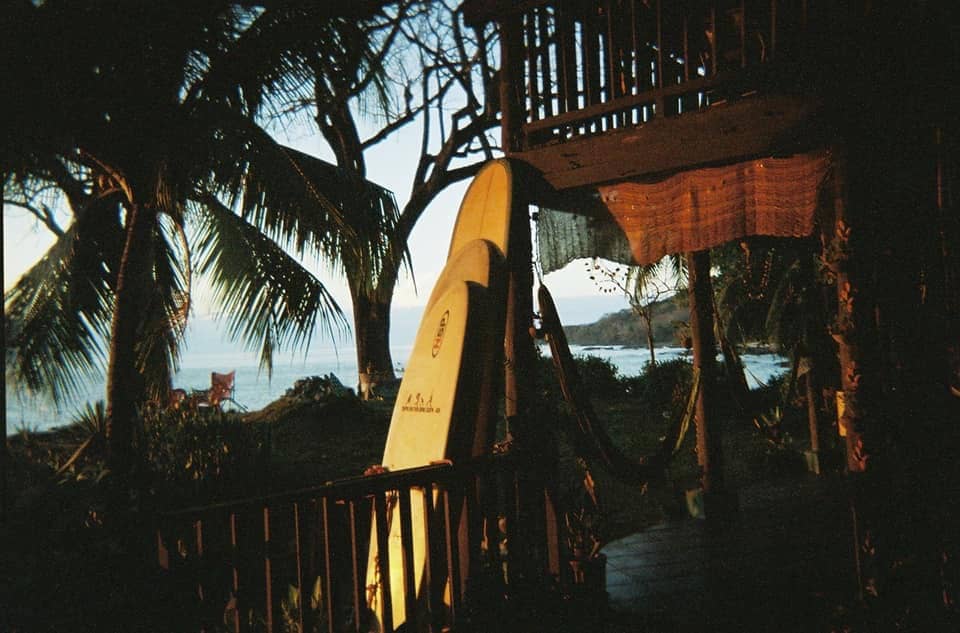
© Maylis Moubarak
4) Montezuma to Santa Teresa
Head to Santa Teresa if you're looking for world-class waves, fun parties and the "pura vida" lifestyle. I stayed at Lost Boyz (and volunteered for one month there), and I recommend it if you're looking for a fun and welcoming vibe. The hostel is minutes away from the beach and has a skate park close to it.
I also recommend Zeneidas Surf Garden if you want to be right on the beach. The people there were lovely, and the hostel has a prime location as it faces one of the best A-frames of Santa Teresa Beach.
💡 Santa Teresa is safe during the day but can get dangerous at night. Don't walk alone and never walk on the beach at night.
South America 6-month itinerary: month 2, Colombia
5) Border Crossing ✈️ Costa Rica to Colombia, Bogotá
Sadly, I couldn't explore Central America further - my dream was to explore Nicaragua, but there were political issues at the time so I had to go straight to Colombia instead.
There's multiple ways to go to Colombia from Costa Rica, but the safest and most practical is to take the plane from San José, with a layover in Panama City. You'll land in Bogota in a few hours.
6) Bogotá to Salento
Salento is the place with the famous giant palm trees. I stayed at a hostel a bit further out the town and, incredibly, bumped into my former Madrid roommate! I hadn't seen her for three years. Coincidences on the road never cease to surprise me.
7) Salento to Jardín
Oh, Jardín. A picturesque town that takes you back in time. Men with cowboy hats stroll through the rustic streets on their horses and warmly greet their neighbours. True to its name, Jardín has abundant, vibrant flowers on every corner. It's a charming town that invites you to slow down, relax, and immerse yourself in its enchanting ambience.
There's a beautiful 6-hour (roundtrip) waterfall hike to La Cueva del Esplandor - head there for a refreshing swim! And try to spot the transparent butterflies: the Greta Oto, or glasswing butterfly (yes, they’re see-through).
8) Jardín to Medellín
I got myself into some tricky situations in Medellín. It's a fascinating city, but keep your eyes and ears open, and don't venture into the "no-go" zones. It might seem like a no-brainer, but some dangerous neighbourhoods are right next to popular tourist attractions. Take the wrong turn, and you can find yourself in hazardous areas. So plan your journey well, and don't walk around flashing your valuables.
9) Medellín to Santa Marta/Palomino
Palomnia is a popular beach town in the north of Colombia. But I got bit over a hundred times on both of my legs by sand flies while I was there. And they itch like crazy. People looked like meth addicts on the beach because of scratching their stings.
💡Bring bug repellent. Lots of it.
10) Palomino to Costeño Beach
Locals told me that Costeño Beach is what Palomino used to be 10 years ago. It’s a beautiful, wild beach that streches for miles on end. There’s a surf spot next to the river mouth, in front of local beach huts, but the waves can get pretty gnarly in January. To get there from Palomino, take a bus on the main highway in the direction of Santa Marta, and tell the driver you want to get off at Costeño Beach.
💡 You can sleep in a hammock in one of the beach huts right in front of the surf spot. But you need a booking to enter the Costeño Beach park, which security officers guard. So unless you're lucky, it might be safer to book a night in one of the backpacker hostels, then walk to the beach huts and ask the locals if they have a free hammock to extend your stay.
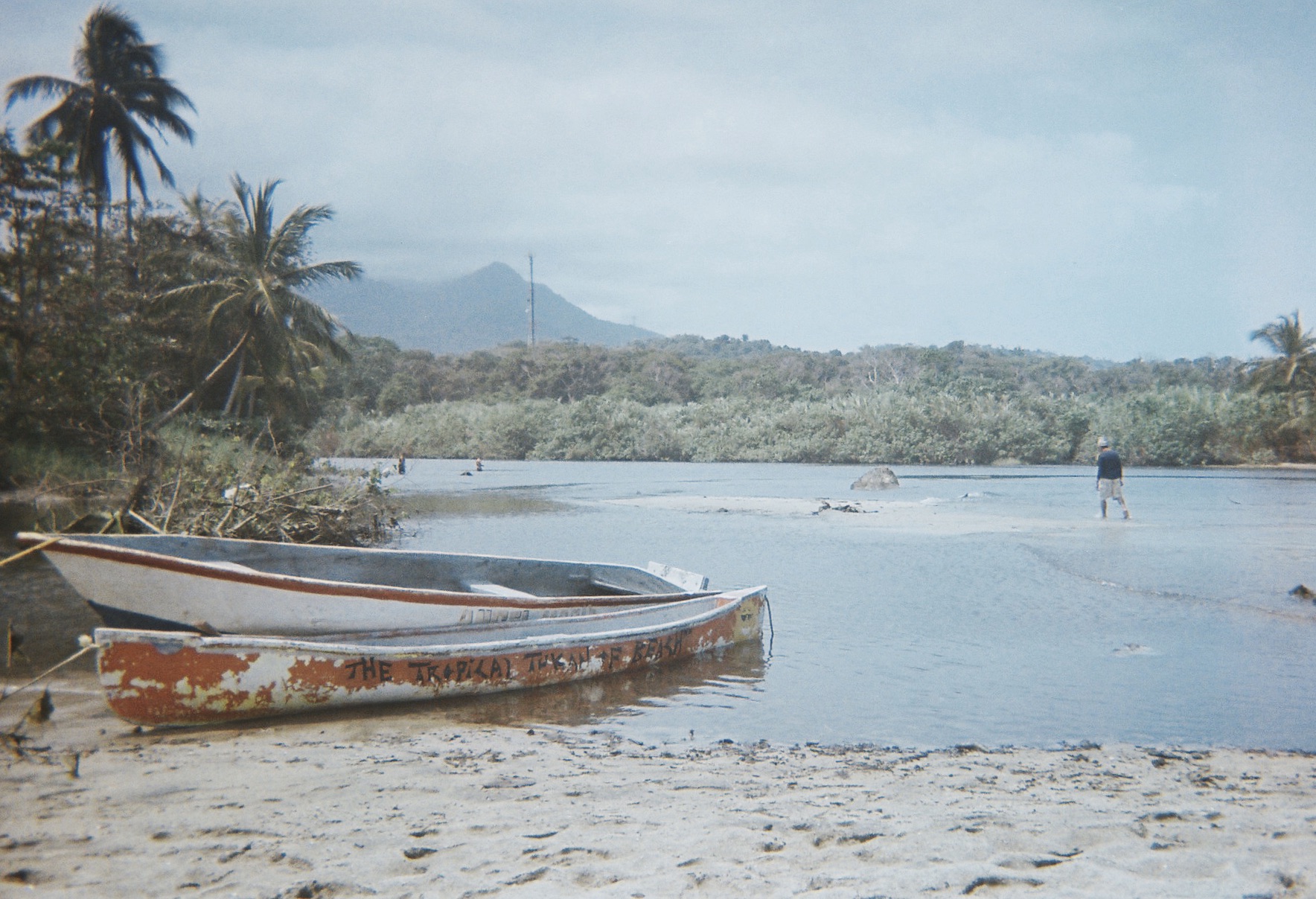
© Maylis Moubarak
Minca was great. I slept in a hammock in Mundo Nuevo Hostel - a hostel on the top of a hill with a fantastic view. The hike to get there is steep but well worth the effort. It also faces a protected indigenous town, making the experience more thrilling.
💡To avoid a painful hike up the hill, you can store your backpack in a hostel in the town down the valley for a few pesos.
If you're looking for Caribbean island vibes, take a two-hour boat ride to Isla Mucura. Stay in one of the hostels or ask locals in the town if they can host you. Most people don't venture out of their hotels and don't even know about the Afro-Colombian village on the other side of the island. Drift off to where most people don't make the effort to go :)
💡Book a night boat tour to see the plankton in the mangroves. You’ll pass by Santa Cruz Del Islote, the most crowded island on Earth!
![Off the beaten path South America backpacking trip itinerary]()
![Adventurous South America backpacking trip route : from islands to mountains]()
© Maylis Moubarak
I had to return to Cartagena and then cross the country by bus to Cali. It's a very long ride. I probably could've planned my itinerary better, but things change quickly on the road. You'll meet someone who tells you, "You must check this out." And you'll trust them. So even if it will make the journey more tiring, planning your next stop on the spot makes everything more exciting.
Apart from a sunset viewpoint on a small hill a bit outside of town, there's not much to do here. I went to the hill alone, and when I came back, two guys in my hostel had just been robbed by a man with a machete at the exact same spot.
I got lucky, but don’t let that discourage you from travelling solo! Shit can happen wherever you are in the world.
To go to Ecuador from Colombia, You can either take a plane to Esmeraldas or Quito, or cross the border by bus. The journey from Popayan to Esmeraldas by bus takes about 16 hours.
I stayed over a month in Mompiche, one of my favourite towns in South America. I volunteered as a receptionist for a beautiful surf house right next to world-class waves. Mompiche is unique, but I’ll let you see for yourself :)
Mompiche travel guide ︎︎︎
![Adventurous South America backpacking route: an unusual itinerary for intrepid backpackers]()
Shot by @judithodm
![Adventurous South America backpacking route: Mompiche, Ecuador]()
© Maylis Moubarak
Nestled amid the scenic Andes, Cuenca is an unexpected fusion of Andean charm and European elegance. From its enchanting cobblestone streets to its ornate architecture and vibrant plazas, I loved exploring the city's many wonders. The food there was also delicious; I ate the best hummus of my life in a little local restaurant (I'm Lebanese, so I know what I'm talking about ;)
Las Cajas National Park, sitting at 4000m above sea level, is worth a visit, especially if you want to try out high-altitude hikes before heading to Peru. That's also where I saw wild llamas for the first time.
![]()
![]()
![6 month South America itinerary: Cuenca, Ecuador]()
© Maylis Moubarak
Vilcabamba is a curious town full of retired Americans sniffing essential oils. If you want to cross the border to Peru, you’ll find lovely eco-hostels to rest for a day or two before making the harrowing journey by bus to Peru.
Alternative: you could also head to Quito from Cuenca to explore spots like Chimborazo and Cotopaxi, or head to surf spots like Ayampe and Olon in the South before heading to Peru.
![Vilcabamba, Ecuador border crossing to Peru]()
© Maylis Moubarak
11) Costeño Beach to Minca
Minca was great. I slept in a hammock in Mundo Nuevo Hostel - a hostel on the top of a hill with a fantastic view. The hike to get there is steep but well worth the effort. It also faces a protected indigenous town, making the experience more thrilling.
💡To avoid a painful hike up the hill, you can store your backpack in a hostel in the town down the valley for a few pesos.
12) Minca to Isla Mucura
If you're looking for Caribbean island vibes, take a two-hour boat ride to Isla Mucura. Stay in one of the hostels or ask locals in the town if they can host you. Most people don't venture out of their hotels and don't even know about the Afro-Colombian village on the other side of the island. Drift off to where most people don't make the effort to go :)
💡Book a night boat tour to see the plankton in the mangroves. You’ll pass by Santa Cruz Del Islote, the most crowded island on Earth!
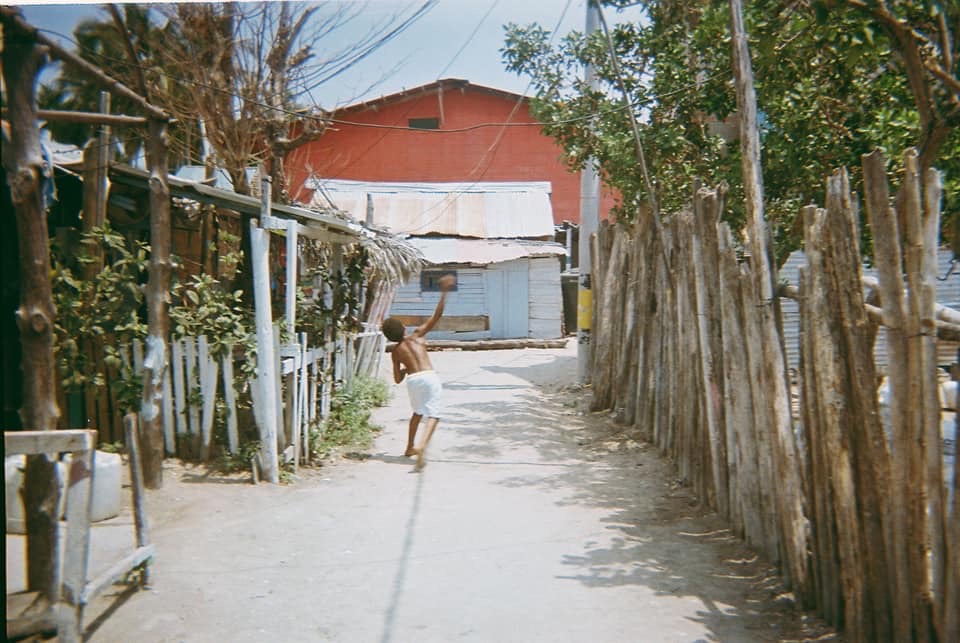
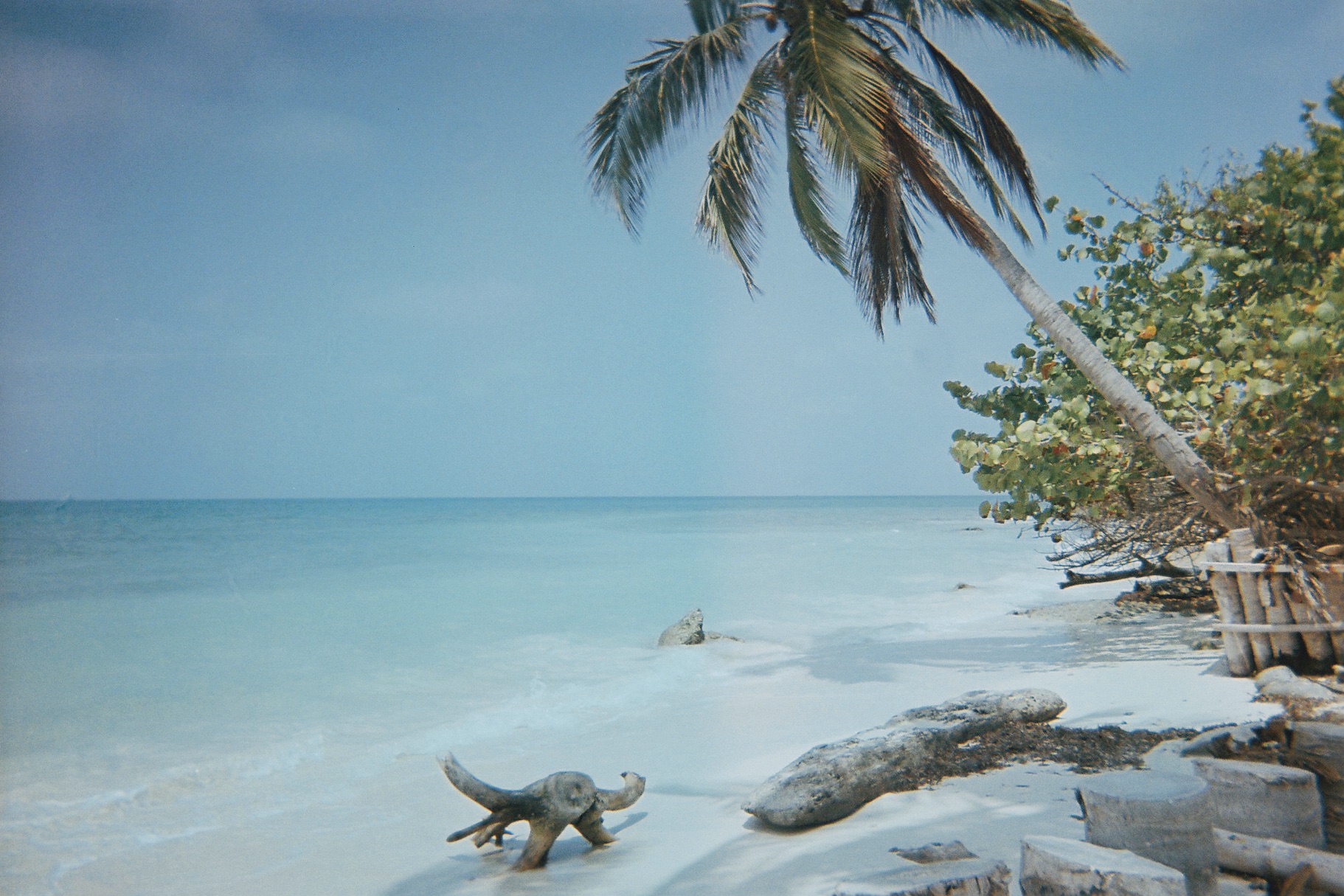
© Maylis Moubarak
13) Isla Mucura to Cali
I had to return to Cartagena and then cross the country by bus to Cali. It's a very long ride. I probably could've planned my itinerary better, but things change quickly on the road. You'll meet someone who tells you, "You must check this out." And you'll trust them. So even if it will make the journey more tiring, planning your next stop on the spot makes everything more exciting.
14) Cali to Popayán
Apart from a sunset viewpoint on a small hill a bit outside of town, there's not much to do here. I went to the hill alone, and when I came back, two guys in my hostel had just been robbed by a man with a machete at the exact same spot.
I got lucky, but don’t let that discourage you from travelling solo! Shit can happen wherever you are in the world.
South America 6 month-itinerary: month 3, Ecuador
15) Border crossing 🚌 Popayán to Mompiche, Ecuador ⭐
To go to Ecuador from Colombia, You can either take a plane to Esmeraldas or Quito, or cross the border by bus. The journey from Popayan to Esmeraldas by bus takes about 16 hours.
I stayed over a month in Mompiche, one of my favourite towns in South America. I volunteered as a receptionist for a beautiful surf house right next to world-class waves. Mompiche is unique, but I’ll let you see for yourself :)
Mompiche travel guide ︎︎︎
© Maylis Moubarak
16) Mompiche to Cuenca
Nestled amid the scenic Andes, Cuenca is an unexpected fusion of Andean charm and European elegance. From its enchanting cobblestone streets to its ornate architecture and vibrant plazas, I loved exploring the city's many wonders. The food there was also delicious; I ate the best hummus of my life in a little local restaurant (I'm Lebanese, so I know what I'm talking about ;)
Las Cajas National Park, sitting at 4000m above sea level, is worth a visit, especially if you want to try out high-altitude hikes before heading to Peru. That's also where I saw wild llamas for the first time.
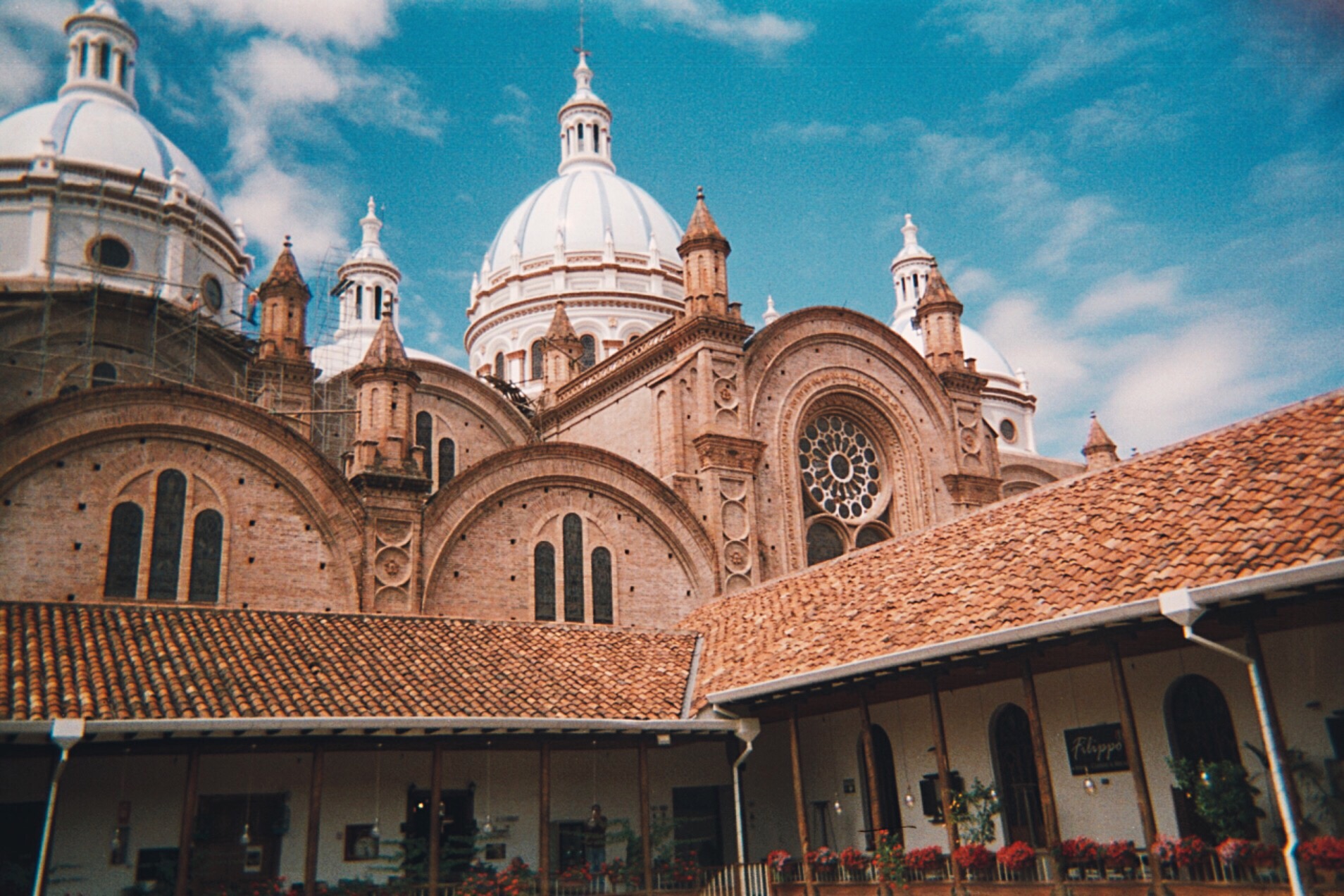
© Maylis Moubarak
17) Cuenca to Vilcabamba
Vilcabamba is a curious town full of retired Americans sniffing essential oils. If you want to cross the border to Peru, you’ll find lovely eco-hostels to rest for a day or two before making the harrowing journey by bus to Peru.
Alternative: you could also head to Quito from Cuenca to explore spots like Chimborazo and Cotopaxi, or head to surf spots like Ayampe and Olon in the South before heading to Peru.
© Maylis Moubarak
South America 6 month-itinerary: month 4, Peru
18) Border crossing 🚌 Loja to Huanchaco, Peru ⭐
This border crossing took over 35 hours. It was very tiring as the bus was highly uncomfortable. And giant mosquitos in a malaria-infested region attacked us while crossing the bridge from Ecuador to Peru in the middle of the night. So bring lots of water, slather yourself with bug repellant, download a few movies on your phone and prepare a good music playlist to make the trip easier.
Fortunately, I was immediately rewarded when stepping off the bus in Huanchaco, a beautiful, unassuming surf town in Northern Peru. It’s less popular than Mancora but has excellent waves. The vibe is great - easy-to-meet people, friendly locals and chill beach bars.
Huanchaco travel guide ︎︎︎
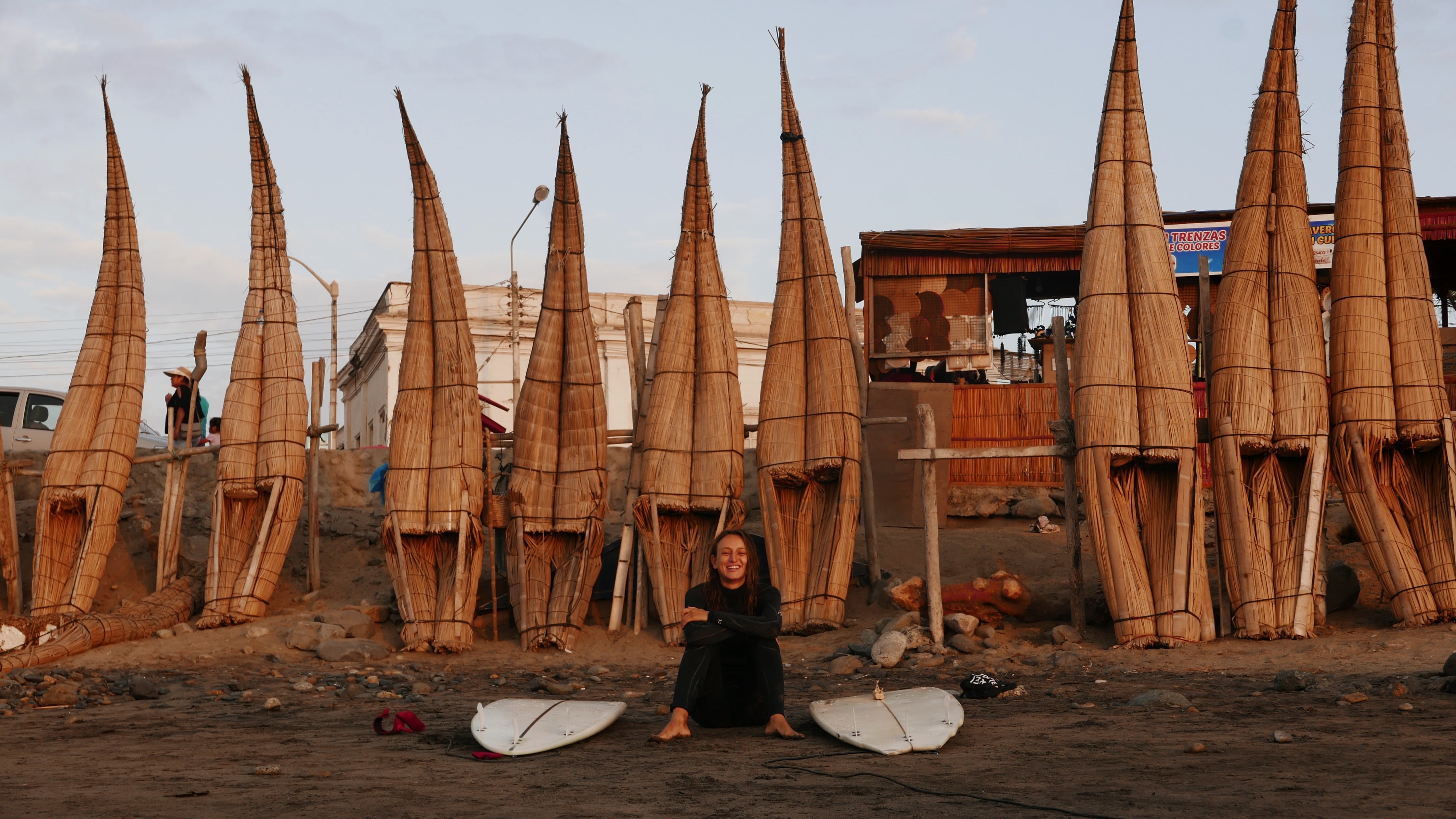 Shot by @judithodm
Shot by @judithodm19) Huanchaco to Huaraz ⭐
Travel guide: Huayhuash 4-day trek, from 4500m to 4880m︎︎︎
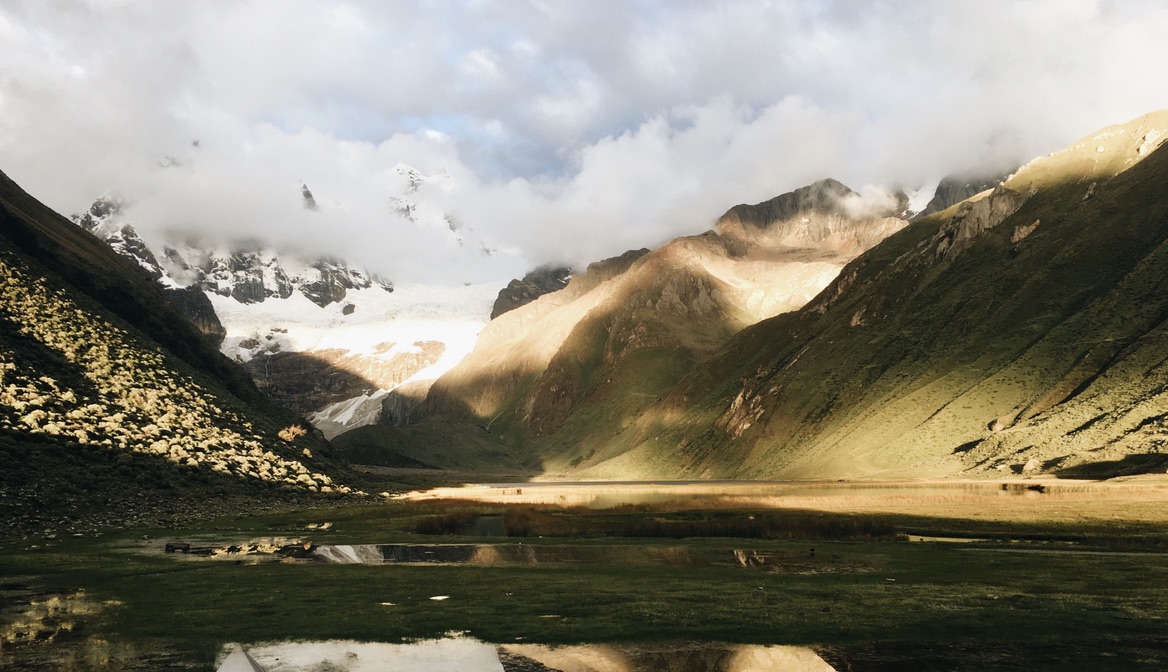
© Maylis Moubarak
20) Huaraz to Lima ⭐
My favourite capital in South America. I loved surfing in Lima and discovering the many aspects of this contrasting city. It’s also the perfect place to refill on good quality sunscreen, bug repellant and backpacking gear.
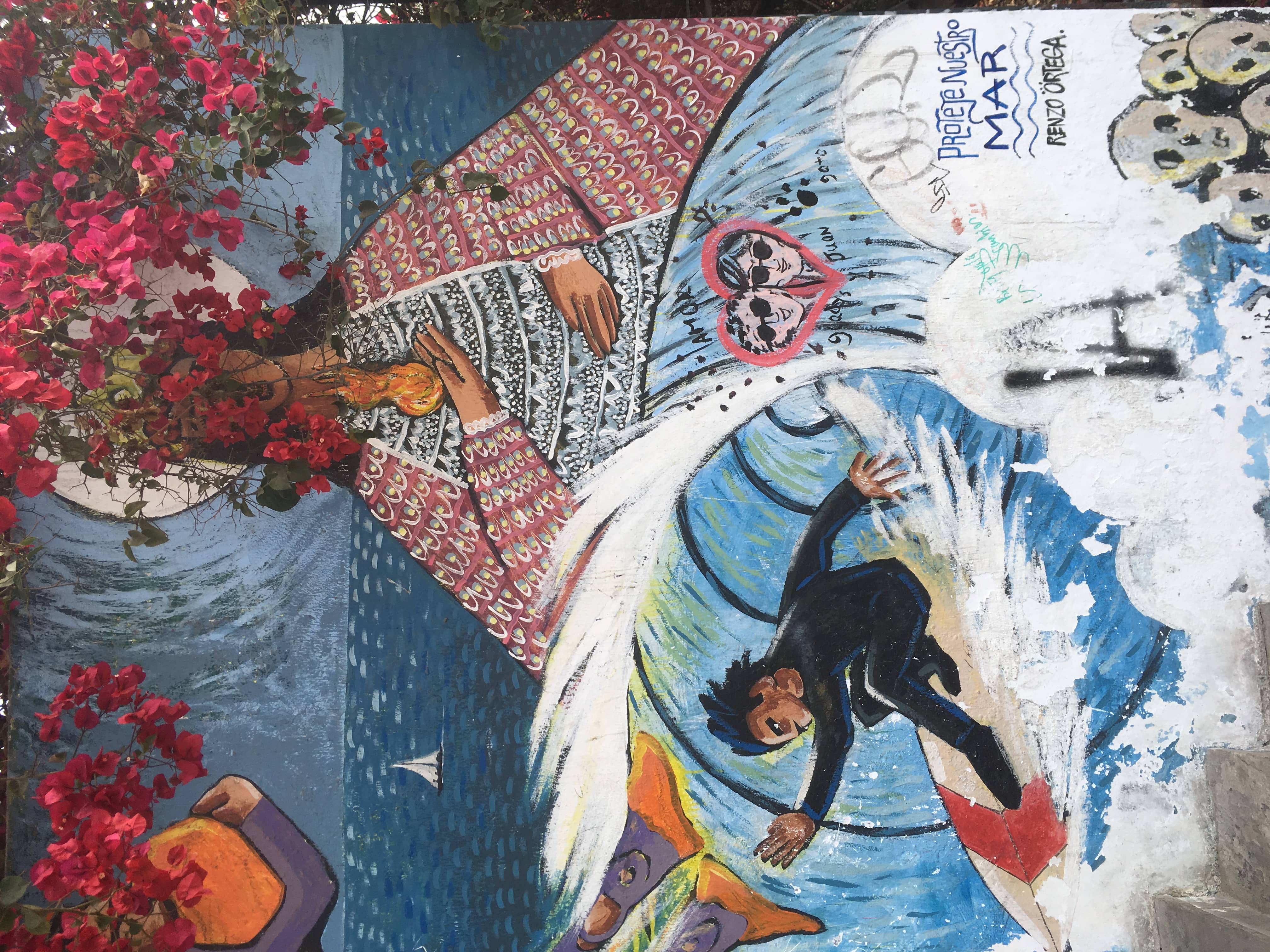
21) Lima to Cusco ⭐
Cusco is very popular amongst backpackers, but it lives up to its reputation. I stayed almost three weeks there, and did the one-week Salkantay Inca trail trek to Machu Picchu.
If you go, try to reach Machu Picchu as early as possible. The only way to beat the crowds is to hike up the steep stone steps from the base of the mountain at 4AM. It takes about an hour if you’re fit (you can do it in 45min if you don’t take any breaks), closer to 2 hours otherwise. But it’s worth every step: if you walk fast enough, you’ll arrive to the Machu Picchu, empty. And you’ll experience pure silence. Before the floods of tourists arrive. Few people get to see this sight.
“At one point, I shut my mind off and accepted my pain. With a steady but fast pace, I suddenly found myself out running multiple groups of people on the way. I climbed to the top in forty-three minutes, drenched. A German girl from my group and I were the first to reach the Machu Picchu that day, and we exploded in joy! We watched in awe as a dense cloud dissipated and revealed the majestuous site, void of people.
Stillness. Silence. Harmony. Splendour. The scenery was enchanting, royal, and remarkably relaxing. I was completely absorbed by the site’s mystical beauty. Three minutes later, the Machu Picchu became flooded with people and lost all of its glory.
It's time to go back down.”
Excerpt from my travel journal
22) Cusco to Arequipa
Arequipa is a beautiful city for its monastery (The Monastery of Santa Catalina de Siena), where you can spend hours admiring the serenity and beauty of the site. You can spend one or two days to rest before heading to Bolivia.

© Maylis Moubarak
South America 6-month itinerary: months 5, Bolivia & Argentina
23) Border crossing 🚌 Arequipa to La Paz, Bolivia
I embarked yet again on a neverending bus ride to cross the border. But La Paz is a must-see if you want a culture shock. From its bustling fruit markets on the streets and witches selling dead baby alpacas on the roads to the women's Cholitas wrestling tournaments, La Paz was an enchanting fusion of curious, quirky experiences.
24) La Paz to Sucre
I spent two nights in Sucre in a private hotel room - yes, a private room. I was hitting the three-month mark in my backpacking trip, and I desperately needed some personal space to recharge. I had been sleeping in hostels non stop and desperately needed a good night’s rest.
It was one of the best nights of my life. I had forgotten entirely about the luxury of privacy.
💡When travelling solo long-term, it’s important to take breaks sometime. If you need some tips on how to take care of your mental health on the road, read my guide.
25) Sucre to Tupiza
Head to Tupiza to uncover the hidden gems of the Sur Lipez region, rivalling if not surpassing the beauty of its more frequented counterpart departing from Uyuni. Starting from the circuit's end rather than Uyuni, you'll cross lesser-known routes, granting you access to enchanting spots absent from the typical tourist itinerary. Tupiza also offers more affordable tours, making it an ideal choice for the intrepid solo explorer.
26) Tupiza to Salar d’Uyuni / Sur Lipez
I was amazed by the surreal beauty of the Sur Lipez. La Ciudad del Encanto - a city of eroded canyons, the Laguna Colorada, a stunning red lake hovering over a Martian landscape, the Salar de Chaipiri, and so many more breathtaking sights. The trip in the Jeep was tiring, but 100% worth it.
![]()
![]()
![La Ciudad del Encanto, Bolivia solo travel]() © Maylis Moubarak
© Maylis Moubarak
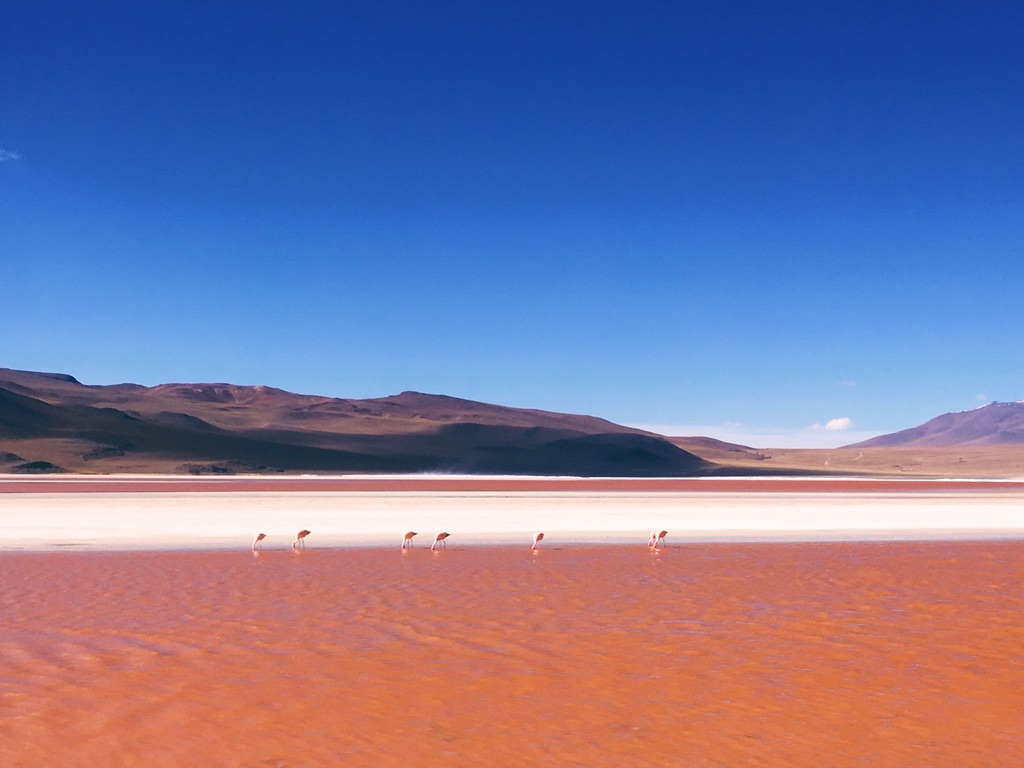
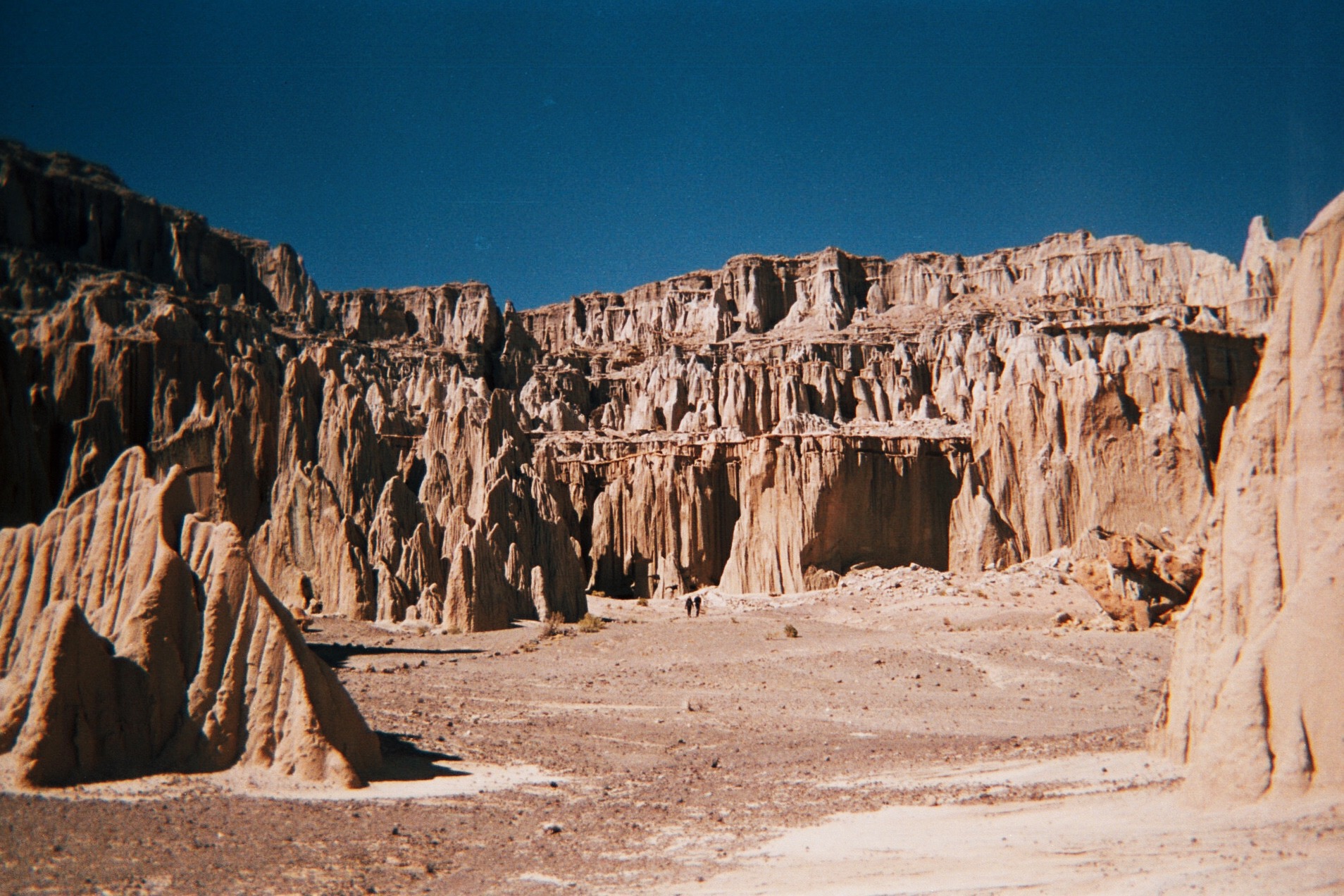
27) Border crossing 🚌 Tupiza to Humahuaca, Argentina
This was the worst border crossing of my trip. When I arrived, there was a public transport strike in Argentina. So I had to wait four hours for a bus at the border town, then got dropped off in the middle of the road, and had to hitchhike for another two hours, walking with my heavy backpack under the blazing sun, before a car finally passed by and picked me up.
Humahuaca though, was lovely. It's got that genuine bohemian vibe I love, good music and a nice artsy scene. You can visit the Rainbow Mountains (Serranía de Hornocal) and nearby towns like Purmamarca and relax in chill hostels.
28) Humahuaca to Iruya
Iruya is a traditional north Argentinian town on a cliff surrounded by vertical summits. It's got more of a Bolivian vibe, probably because it's so close to the border.
💡If you're down to make the trip through the narrow mountain roads, you can visit Iruya and return to Humahuaca on the same day.
29) Iruya to Tilcara
Tilcara is full of hippie backpackers. It's fun to spend a few days there, hike to La Garganta del Diablo (The Devil’s Throat), and explore the central market.
30) Tilcara to Salta
The city of Salta was a hard pass for me, but I was travelling during the low season. I stayed too long there (5 days), as I was waiting for a friend to join me before going to Cafayate. So if you're not into cities, stay a day to rent a car, then quickly head off to explore the Salta region - not the city itself.
31) Salta to Cafayate/Angastaco
Yes, the Cafayate region is a must-see. Rent a car and go drive around the Quebrada de las Flechas. It's a fantastic bumpy ride with incredible sights.
32) Cafayate to Salinas Grandes
Although less impressive than the Salar de Uyuni, the Salinas Grandes got their fair amount of punch. But I wouldn't recommend it if you're pressed for time and have already seen the salt lakes of Bolivia. You could skip Salinas Grandes and explore the Atacames desert instead.
33) Cafayate to Buenos Aires
Buenos Aires, what a fun city! When I went there, there was a massive electricity cut in the entire city - the power was out for two days. But still, it didn't prevent me from exploring the lively streets of the Argentinian capital, with hints of Europe and smells of asado warming up the graffiti-filled neighbourhoods.
South America 6 month itinerary: month 6, Brazil
34) Border crossing 🚌 Buenos Aires to São Paolo, Brazil
If you can, take a plane from Buenos Aires to Brazil rather than the bus. The bus journey is complicated, horrifyingly long and it costs almost as much as the flight.
35) São Paolo to Ihla Grande
Ihla Grande is a little island near Rio de Janeiro. It's got that afro-Brazilian vibe you want to taste when you think about Brazil. No cars are allowed on the island, so...you get what I mean. If you’re lucky, you may get some fun waves when you’re there!
36) Ihla Grande to Paraty & Paraty Mirim ⭐
If you go to Paraty, spend one day there to visit the city then head to Paraty Mirim and check out ReMo Hostel: a tree house in the jungle. Really, it's a trip. Spot the Einstein-looking monkeys and cute sloths hanging around in the trees!
ReMo Hostel: live like Tarzan with monkeys and sloths ︎︎︎
37) Paraty to Ubatuba ⭐
I volunteered for one month in Ubatuba for a Brazilian couple's eco-Airbnb. Ubatuba is a relatively unknown surf town with plenty of surf spots for all levels. Locals are fierce here, so respect the lineup and learn a few words of Portuguese.
I could bike to the surf spot from my house (accommodation was free, with four other wonderful volunteers). I was surfing every day and having the best time of my life, again.
Ubatuba travel guide ︎︎︎
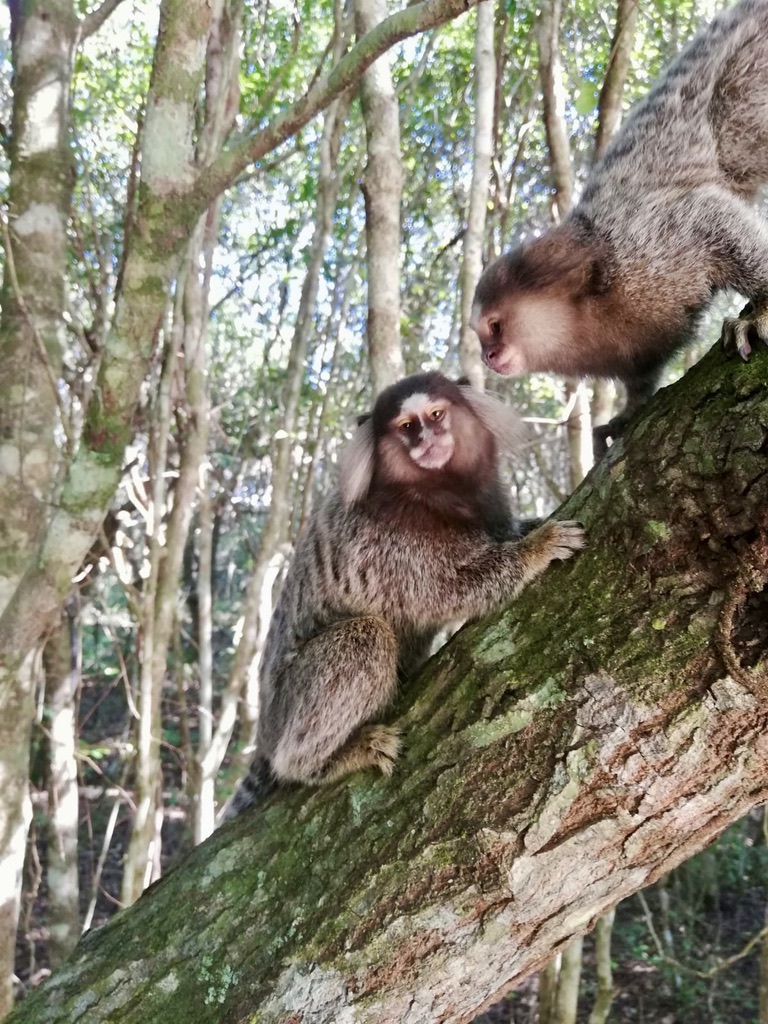
38) Ubatuba to Rio de Janeiro
My days in Rio were a mix of surprise, joy and tears. I realised I wasn't ready to head back. Brazil had caught my heart, and I wanted to see more. But sadly, I was out of money and needed to handle admin’ issues back home.
39) Rio de Janeiro to São Paolo
Time to head back to Europe. I took a bus to São Paolo with a hole in my heart. I prayed for the bus to be late so I could miss my plane. But the bus was on time for the first time in six months. I accepted this fact as a sign I should trust it's the right moment to leave.
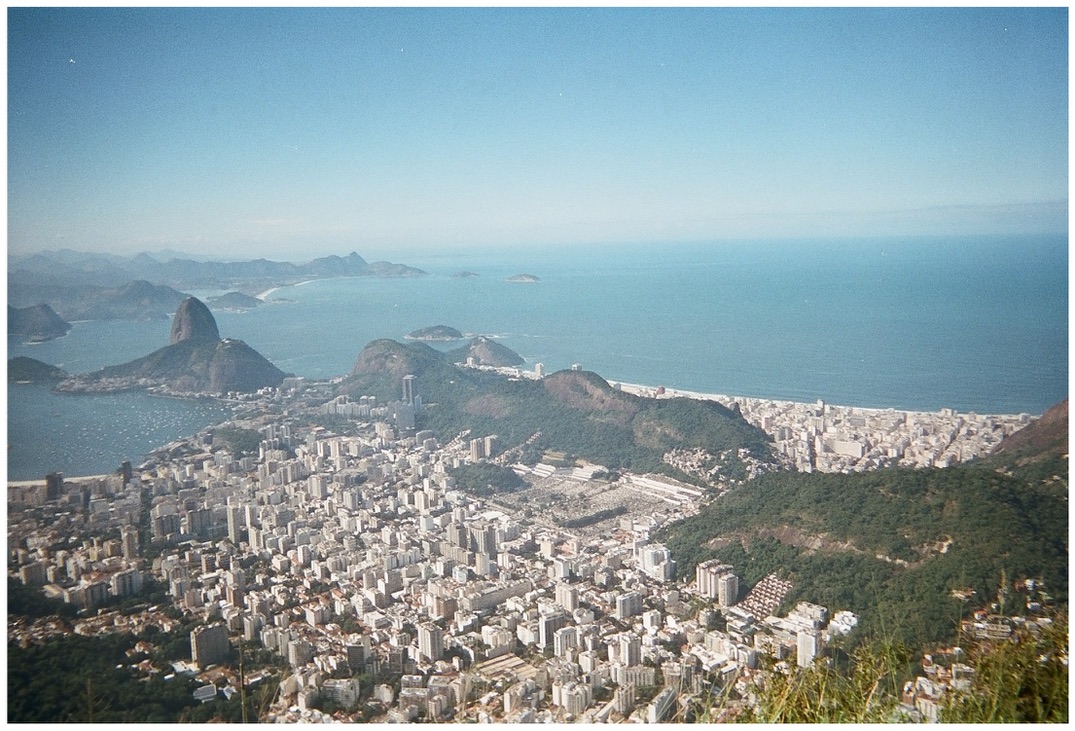
40) São Paolo to Paris
I hopped off the bus, boarded the plane, and contemplated the sky, thinking, “Wow. I did it.” This trip was the best 185 days of my entire life.
And to this day, four years later, thinking about this trip still brings me tears of joy :)
Surf & Trek 6-month South America Itinerary Map
Save this map so you can access if while travelling in case you want to remember destinations you’d like to visit :
6-month South America Itinerary Weather Table: January-July
Here’s an overview of the different seasons you’ll go through, which can help you decide on the region to visit depending on when you’re travelling.
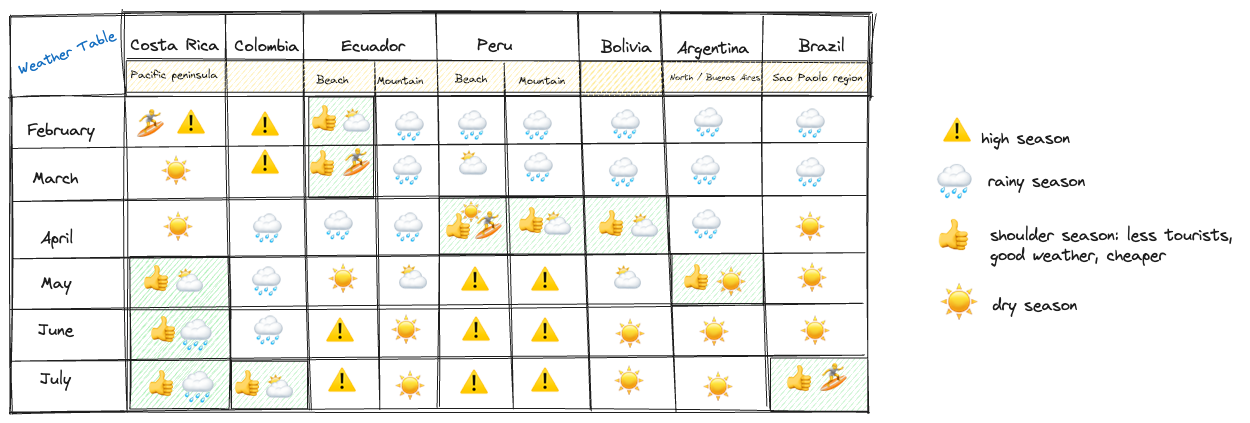
I hope you now have some ideas of what to explore in South America. For more resources to help you plan your trip, check out:
- What to pack for a 6-month backpacking trip in South America
- How to plan a budget-friendly backpacking trip (with a free budget worksheet template)
- Wellbeing on the road: 10 mental health tips for solo backpackers
- The all-in-one backpacking trip planner (free!)
With love,
Maé
Looking for the best trip-planning resources and apps for your next solo adventure? I've curated over 60 free travel resources, including travel planning apps and guides, itinerary maps, travel insurance, the best travel gear, and everything you need to enhance your life on the road. 60+ TRIP PLANNING RESOURCES: FREE NOTION LIBRARY
Looking for the best solo travel resources and apps for your next adventure? I've curated over 60 trip planning gems, including inspiring blogs, travel planning apps and guides, itinerary maps, travel insurance, remote working, the best travel gear, and everything you need to enhance your life on the road. From managing your finances, building the perfect itinerary, finding remote work opportunities, and getting inspired while travelling, you’ll find something useful in this big list of free travel planning resources. Bookmark this list to your Notion workplace - I update it regularly!

The big list of handy trip planning resources for solo travellers ✦
In a hurry? Here’s a snapshot of available resources.
🗺️ Apps and Itinerary Mapping
- Polarsteps: a travel planning app that tracks your itinerary and lets you share your best travel memories (and location) with your friends and family.
- Roadtrippers: a popular travel app that allows you to plan, navigate, and discover your perfect road trip adventure. With Roadtrippers, you can map out your route, find interesting attractions along the way, and create custom itineraries to make the most of your journey.
- Trava: a free travel agent app that creates customisable trips and maps out your itinerary for you.
- Travel Map: a travel mapping app that lets you trace your route and share it with your network.
- Backpacking Trip Planner: an all-in-one travel planner to budget for your trip, and know everything you need to do before leaving, including a backpacking essentials checklist, visa and admin’ requirements, itinerary mapping, and more.
- Maps.me: a mobile mapping and navigation app that provides detailed offline maps and routing capabilities. It allows you to download maps of specific regions or countries onto your mobile devices, helping you explore unfamiliar areas without relying on an internet connection.
- Google My Maps: create your personalised map to record your itinerary and trip highlights.
- Rome2Rio: find the best way to get from one destination to another. Get information on various travel options, including flights, trains, buses, ferries, and driving routes, allowing you to compare prices, durations, and schedules. Rome2rio also provides estimated costs for each mode of transportation and offers suggestions for multiple route options.
🛸Booking Flights & Accommodation
- Skyscanner: search by month to find the best deals to book your flights
- Bookings.com: a great platform to find reviews and quickly spot the best hostel for your needs
- Hostel World: a booking platform specialising in hostels around the world
- Home Exchange: an app that allows you to switch homes with other travellers so you can sleep in a new place for free.
- Couchsurfing: sleep for free at other people’s verified homes.
- Sportihome: A website that’s like Airbnb but that exclusively caters to people interested in sports.
💸 Trip Budgeting & Managing your Finances
- Budgi: An app to record your spending while travelling.
- Travel budget worksheet: a free google sheet template to estimate your trip budget.
- Tricount: an app to easily share expenses with other people.
- Tripcoin: a travel budget app to track your expenses in multiple currencies.
🚜 Finding Volunteering Opportunities & Remote Work
- Worldpackers: an online platform that connects travellers with hosts around the world who offer accommodation in exchange for work or volunteering.
- Workaway: a paid online work exchange platform to find opportunities with verified hosts worldwide. It’s free to browse opportunities.
- WWOOF (World Wide Opportunities on Organic Farms): an international organisation that connects volunteers with organic farmers and hosts around the world. WWOOF offers individuals the chance to work on organic farms in exchange for accommodation, meals, and the opportunity to learn about sustainable farming practices.
- Best remote job boards to make money while travelling: We Work Remotely, Remotive, RemoteOK
📋 Best Travel Insurance for Solo Travellers
- SafetyWing: a global travel medical insurance provider designed for digital nomads, remote workers and long-term travellers.
- World Nomads: best-in-class travel insurance for long-term travellers.
- Chapka Assurance (France): one of the best travel insurances for French travellers.
Trip Planning Resources: Staying Inspired and Learning on the Road
Travel Blogs & Magazines
The Broke Backpacker: a popular travel blog founded by Will Hatton, a seasoned adventurer and budget traveller. If you’re looking to explore the world on a shoestring budget, this is the blog for you.
The Travel Episodes: a blog dedicated to immersive storytelling and in-depth travel narratives. It’s a platform for travel writers and photographers to share their captivating stories and experiences from around the world. The blog focuses on showcasing the human side of travel, delving into the cultural, social, and personal aspects of different destinations.
Bucket Listy Blog: a blog with detailed backpacking itineraries worldwide. It highlights activities and destinations that go beyond the typical tourist attractions, and features high-quality travel photography and expert tips for travel photographers and backpackers alike.
Another Escape: With vibrant photography, insightful articles and immersive destination guides, Another Escape transports readers to breathtaking destinations and gives practical tips and inspiration for your next travel experiences.
185 Jours: A digital travel journal retracing my solo backacking adventures around the world, including a comprehensive Solo Backpacking Travel Handbook with travel tips to plan your journey.

Download the free trip planning resource Notion list: includes over 60 resources!
Enter your email to access a Notion list that you can duplicate to your workspace for easy access.

Can’t see the download form? Hit refresh ︎︎︎
As a seasoned solo backpacker with years of globetrotting experience, here are my top tips to help you prepare your next long-term adventure, from saving money to packing the right gear.
10 TIPS FOR PLANNING A LONG-TERM BACKPACKING TRIP IN SOUTH AMERICA
Are you itching to embark on an unforgettable backpacking journey, but have no idea how to plan a backpacking trip? I've got your back. As a seasoned solo backpacker with years of globetrotting experience, here are my top tips to help you prepare your next long-term adventure, from saving money to packing the right gear.

Long-term trip planning tip #1: Estimate your travel backpacking trip budget before leaving
The most challenging thing for me was estimating how much money I needed to save before leaving, as I couldn’t rely on any salary or income during my backpacking travels. So I used a budget planner to estimate my travel budget - you can download it for free here. It'll help you see how much you need to save, how to calculate travel expenses, and how to change your current spending habits. For budget-planning tips, read my guide: How to plan a budget-friendly backpacking trip.
Long-term trip planning tip #2: Don't plan every step in advance
While having a basic itinerary plan when backpacking is essential, I recommend not planning every step of the trip in advance. One of the joys of backpacking is the unexpected experiences and surprises that come your way. When you leave some room for spontaneity, you'll be open to new adventures, meet different people, and discover unexpected places you may never have planned to visit. By embracing the unknown, you'll have a more authentic and memorable travel experience that will stay with you for a lifetime.
I recommended building a wish list of places you’d love to visit before leaving to get a general idea of which countries you want to see. South America is huge, with plenty of places to explore, so it's easy to get overwhelmed. Making a wish list will help you focus on the countries and regions that interest you the most and stay within budget. You can find a free travel wish list template in my all-in-one backpacking trip planner.
If you need inspiration and are into surfing and hiking, explore my 6-month backpacking trip itinerary in South America.
Long-term travel planning tip #3: Visit countries in the shoulder or off-season
![]()
South America is a year-round destination, but the best time to visit varies depending on the country and region you plan to explore. Research the weather patterns of the places you plan to visit, as this can affect your budget and packing list. It's always best to avoid high season - unless you want to be surrounded by people with selfie sticks and pay higher prices for mediocre places.My backpacking trip planner includes recommended times to visit Ecuador, Peru, Bolivia, Colombia, Costa Rica, Argentina, and Brazil.
Long-term trip planning tip #4: Book flights at least 4 months before you leave
Booking your flights in advance is one of the best ways to save money on your South American backpacking trip. Flights can be expensive, but you can take advantage of early-bird deals by booking early (at least 4 months in advance if you’re based in Europe).
Using a travel retroplanning or trip task list can help you set reminders for when to do the important admin’ stuff, like taking vaccine shots, booking international flights and applying for visas. Think of it as your master trip to-do list, listing all the things you need to do pre-departure.
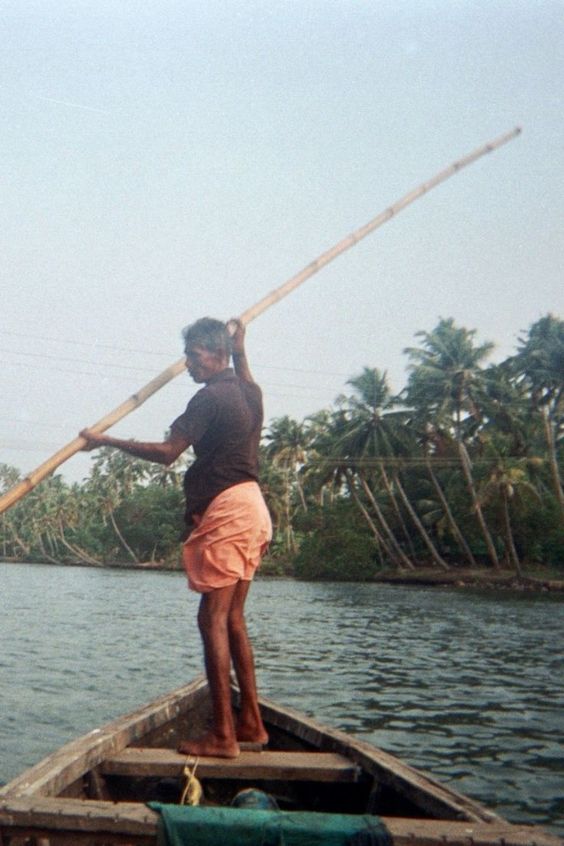
Long-term trip planning tip #5: Don't book hostels on bookings.com or similar platforms
Hostels are a great way to save money on your South American backpacking trip. But prices will always be much higher on platforms like bookings.com. Bookings.com and Hostelworld are great for getting an idea of the places available. But once you find a hostel where you'd like to stay, I recommend finding their website or Instagram and shooting them a nice message saying you'd like to stay a few nights. Or, show up directly at their door. You'll get lower rates and, often, a warmer welcome as you'll save the hostel owners costly fees.
On the other hand, if you’re travelling during high season, then booking accomodation online becomes necessary, as most places will be fully booked.
Long-term trip planning tip #6: Learn Spanish!
This is non-negotiable. Knowing some basic Spanish can make your trip much more enjoyable and manageable - especially if you plan to visit off-the-beaten-path places. Learning a few key phrases will help you navigate the country, communicate with locals and respect their local culture. Consider taking language classes before your trip, meeting with Spanish people, watching Spanish Netflix movies with English subtitles, and using apps like Duolingo.
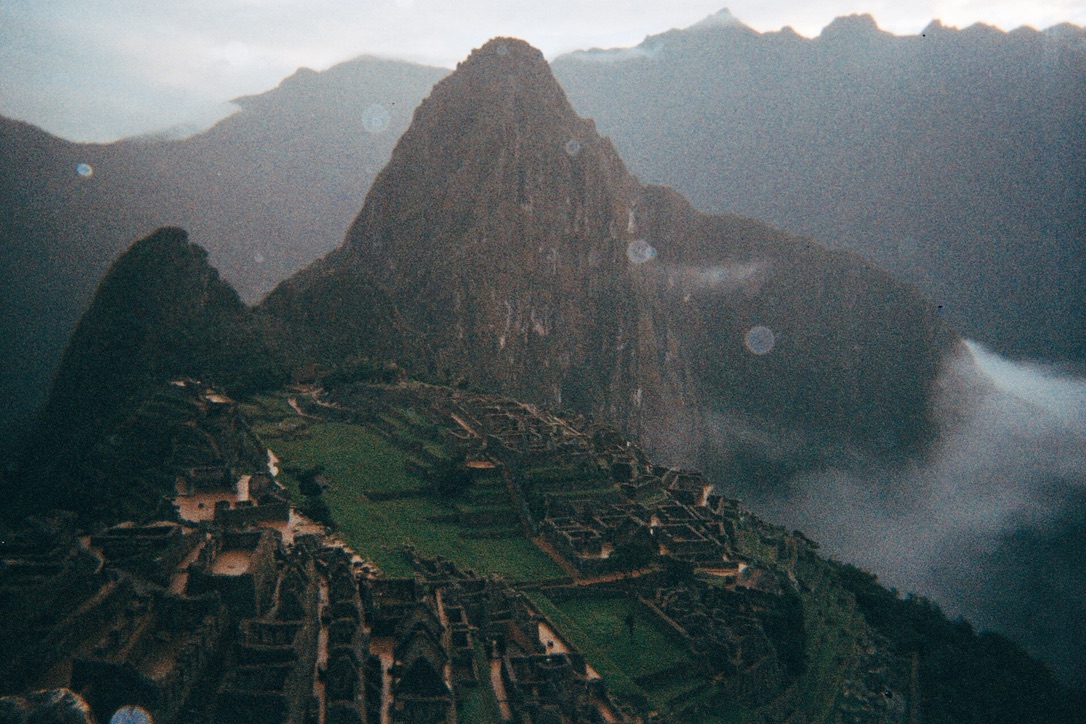
Long-term trip planning tip #7) Volunteer with local businesses
I spent 3 months volunteering at hostels in South America:
- one month working as a receptionist at a surf house in Costa Rica, for a free bed and free meals (breakfast and dinner)
- one month working as a receptionist at a surf house in Ecuador, for free accomodation
- one month helping build a local eco-friendly Airbnb in Brazil, in exchange for free food and accommodation
It was a fantastic experience - in fact, the best times I’ve had in my trip were while volunteering. It’s a unique way to experience the local culture, and a fantastic opportunity for introverts to make lifelong friends. And since you won't have to pay for accommodation or meals, you'll be able to save a significant amount of money while extending your trip.
To find volunteering opportunities in South America, you can use sites like Worldpackers and Workaway, or get in touch via Instagram.
Long-term trip planning tip #8 Backpacking essentials for South America: pack smart and stay under 12kg
The climate in South America can vary widely, so it can be tricky to pack for a 6-month backpacking trip. What you bring will also heavily depend on the activities you'll do, like surfing and trekking. Pack quick-drying clothes and layers that can be easily added or removed. I've included a detailed backpacking packing list in the trip planner, including essential documents to bring and recommended equipment for surfing and trekking. Use this packing list for inspiration, or edit and adapt it to your needs.

Long-term trip planning tip #9: Bring a water filter
Safe drinking water can be scarce in some parts of South America, so it's wise to bring a water filter or purification tablets, especially if going trekking. This will allow you to save money on bottled water and reduce your plastic waste.
Long-term travel planning tip #10: Budget for unexpected expenses
Even with careful planning, unexpected expenses will happen during backpacking trips. I, for instance, got all my valuables stolen in Ecuador, and got my foot heavily infected after surfing, which required hospitalisation. So have some extra money set aside for emergencies, and always travel with an insurance.
Need more help? Download my free ebook for backpackers. It contains free trip planning tools (including 5 free Google Sheets templates) and a comprehensive step-by-step roadmap to plan an unforgettable backpacking adventure.
Download your free backpacking ebook ︎︎︎
Download your free backpacking ebook ︎︎︎



 BACKPACKING SOUTH AMERICA IN 40 STOPS: SURF & HIKE 6-MONTH TRIP ITINERARY
BACKPACKING SOUTH AMERICA IN 40 STOPS: SURF & HIKE 6-MONTH TRIP ITINERARY

 WELLBEING ON THE ROAD: 10 MENTAL HEALTH TIPS FOR SOLO TRAVELLERS
WELLBEING ON THE ROAD: 10 MENTAL HEALTH TIPS FOR SOLO TRAVELLERS







